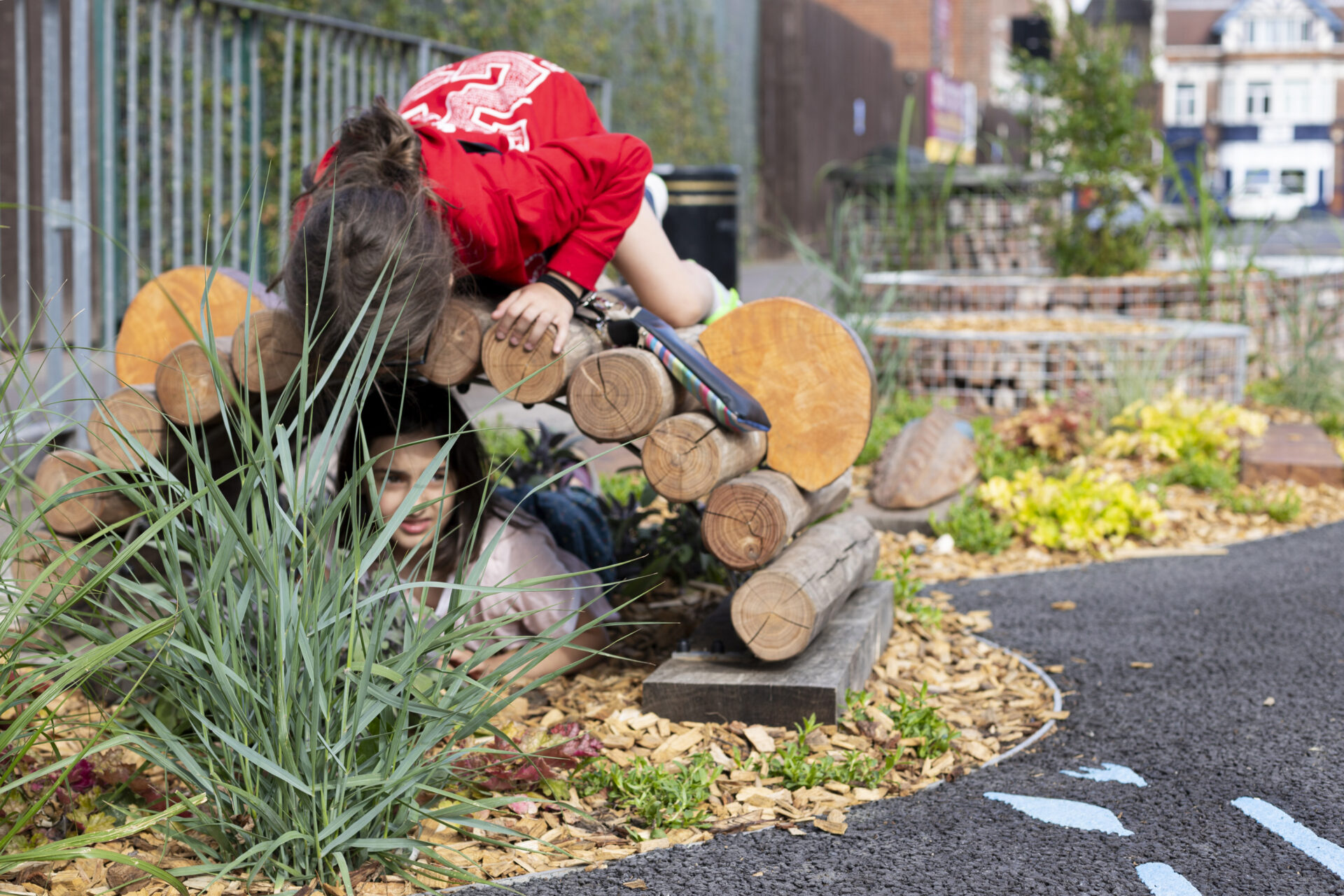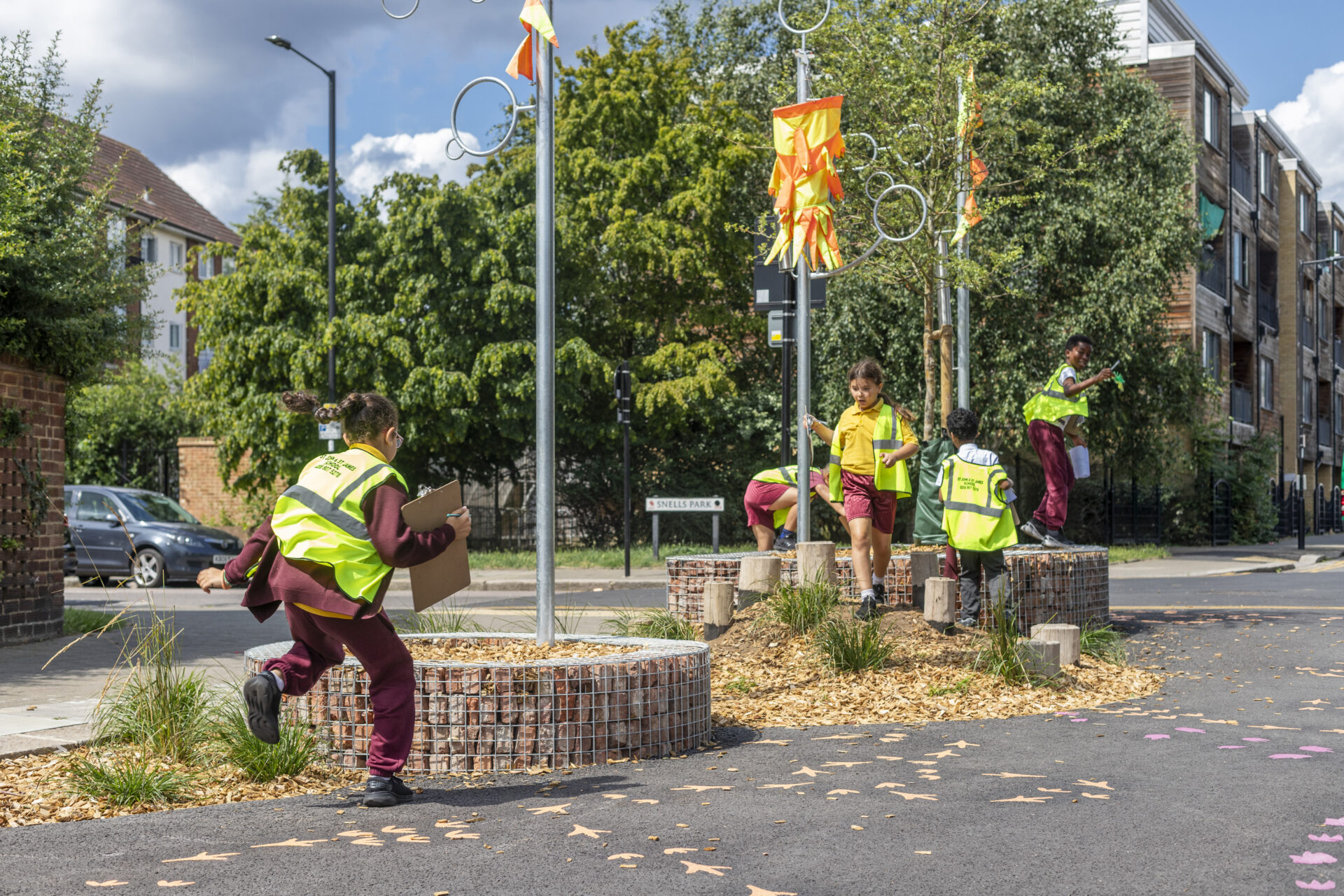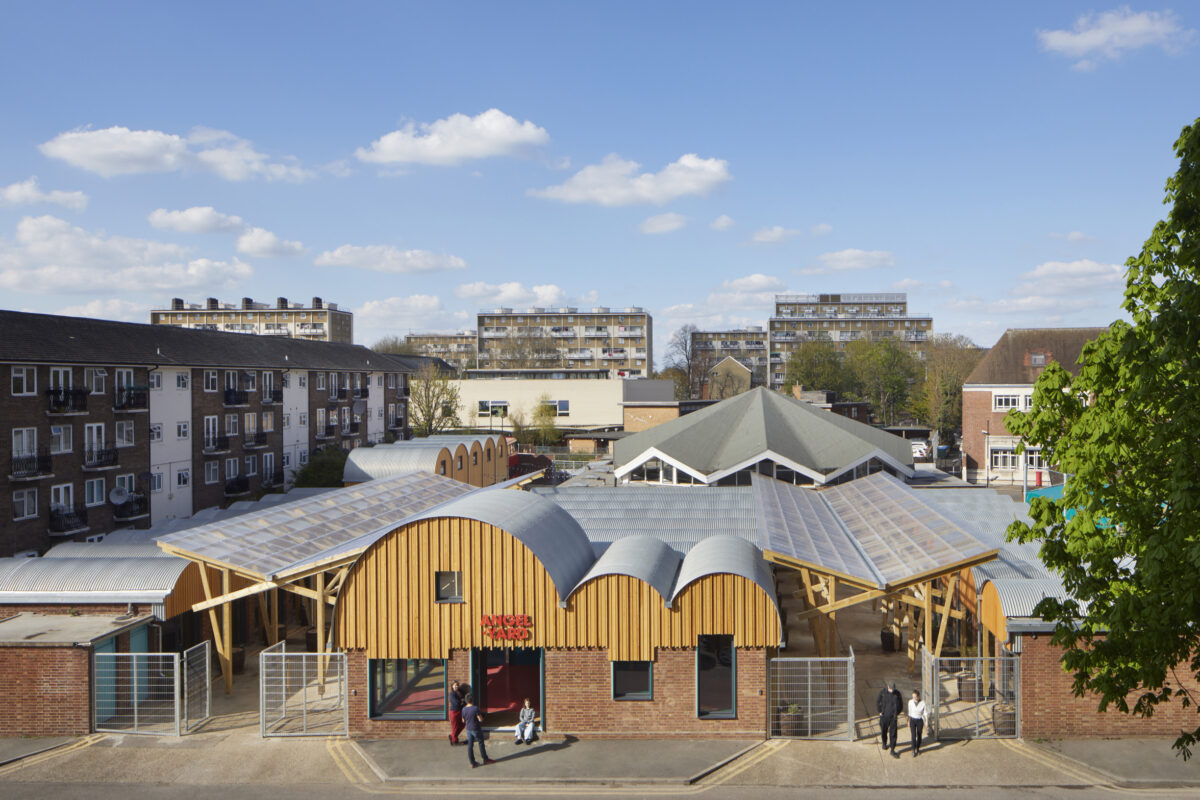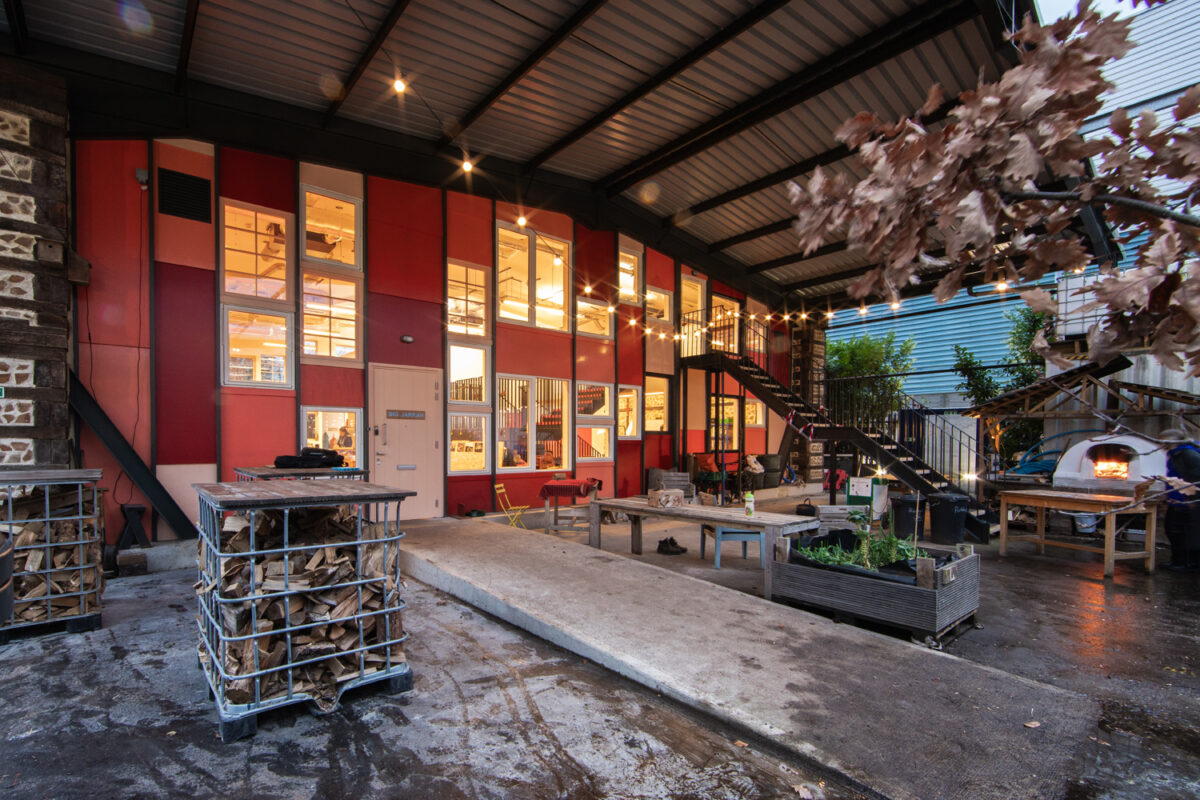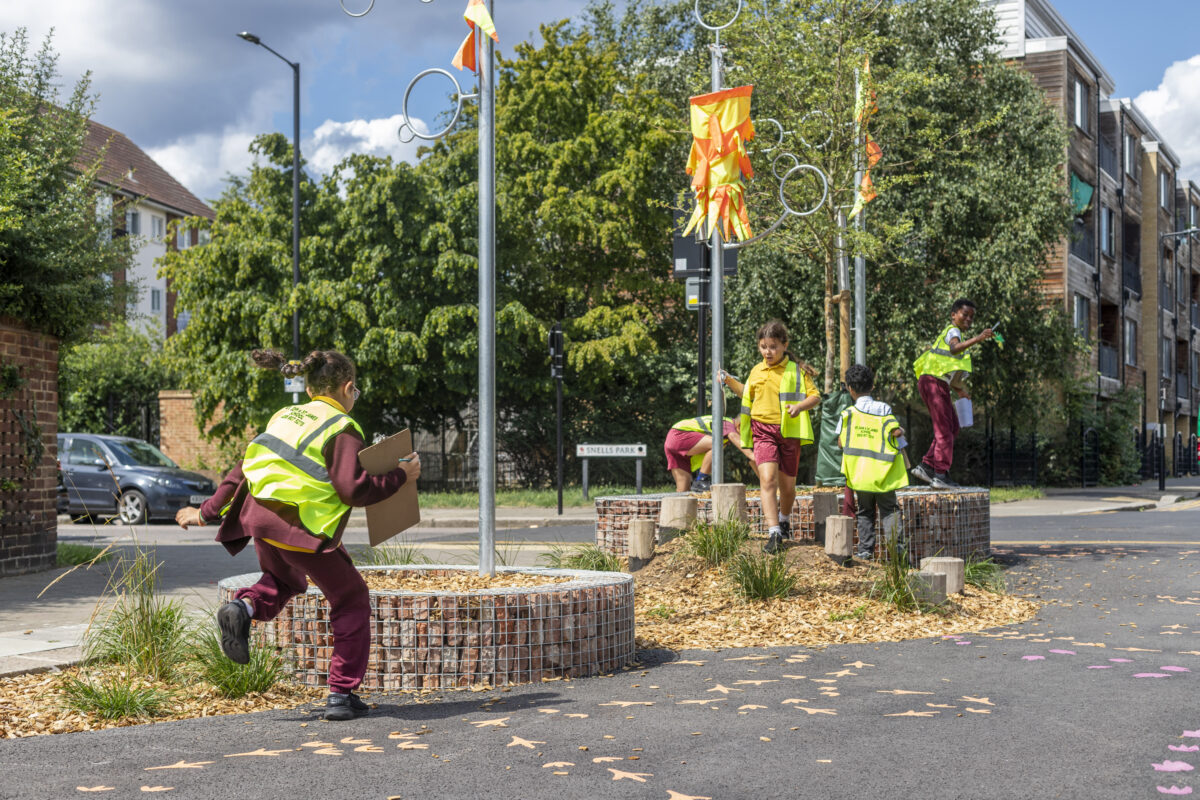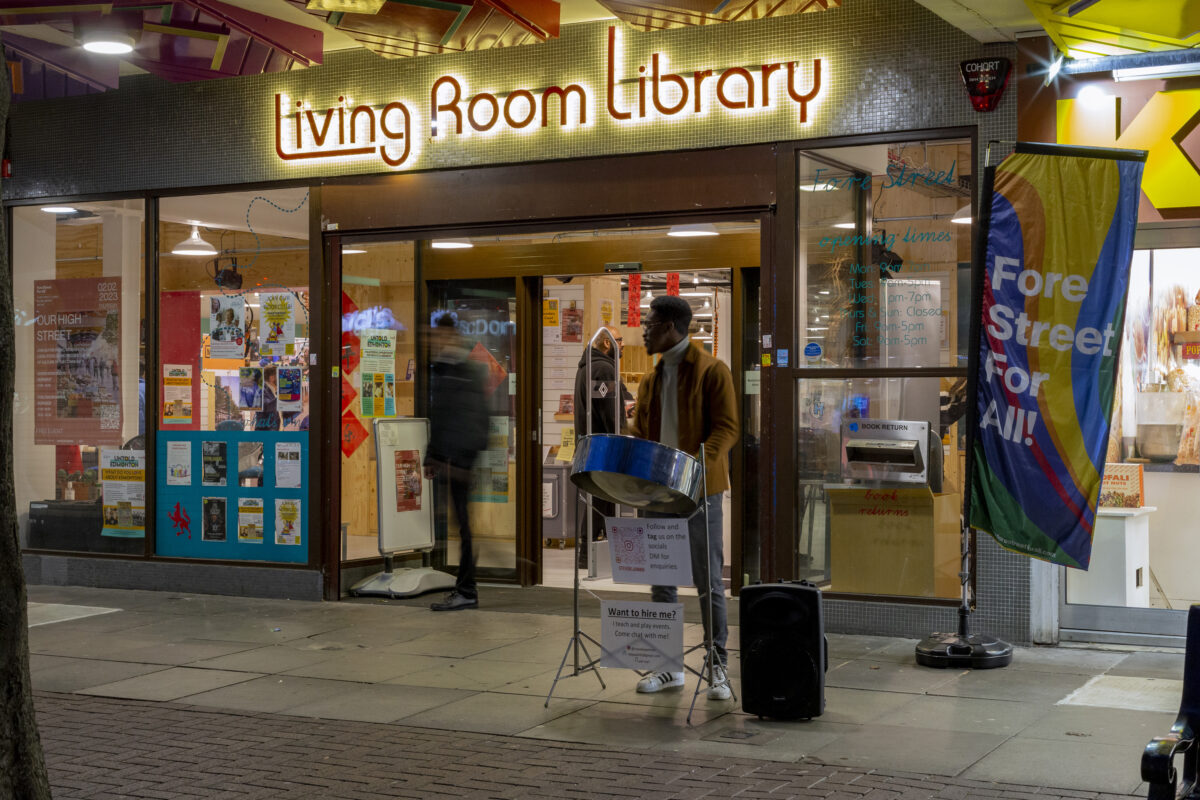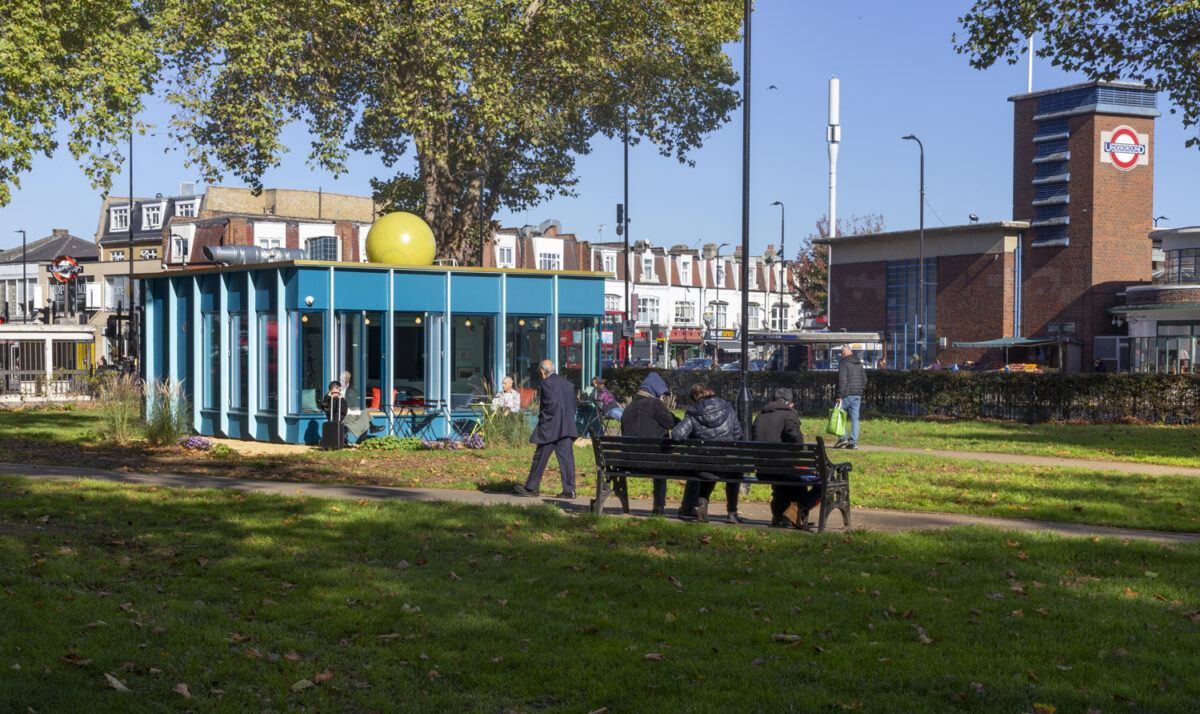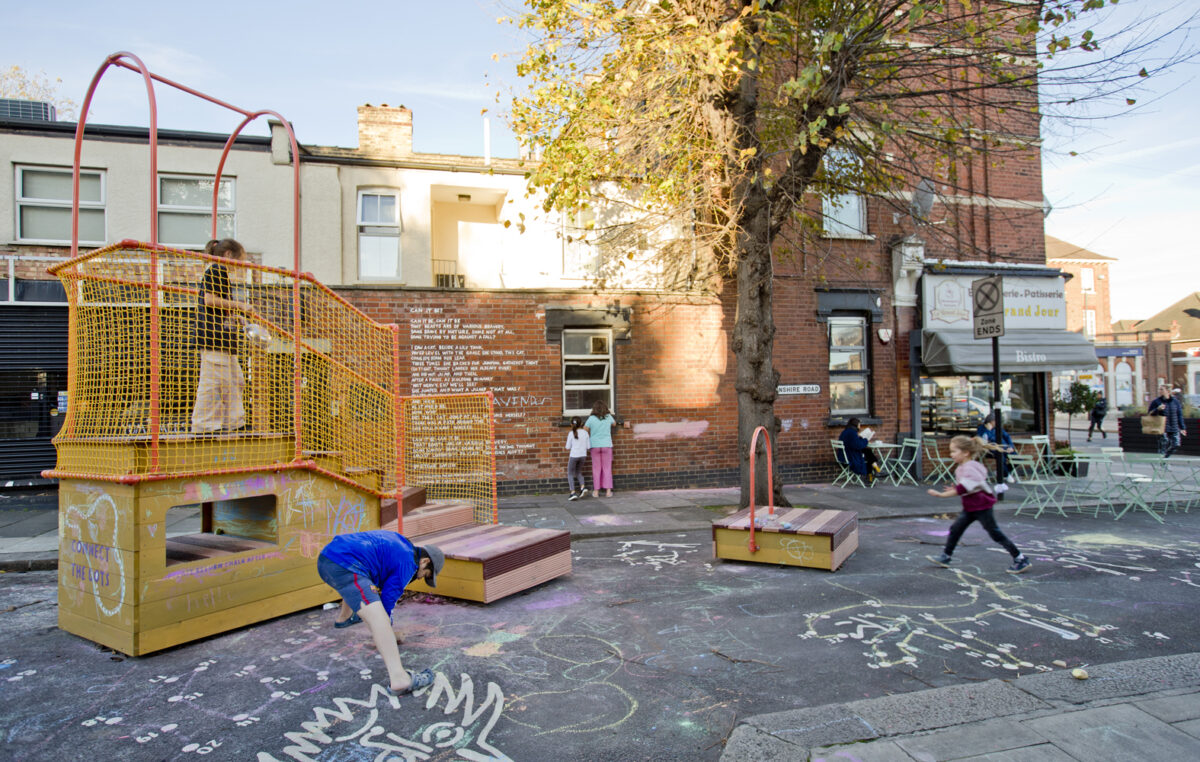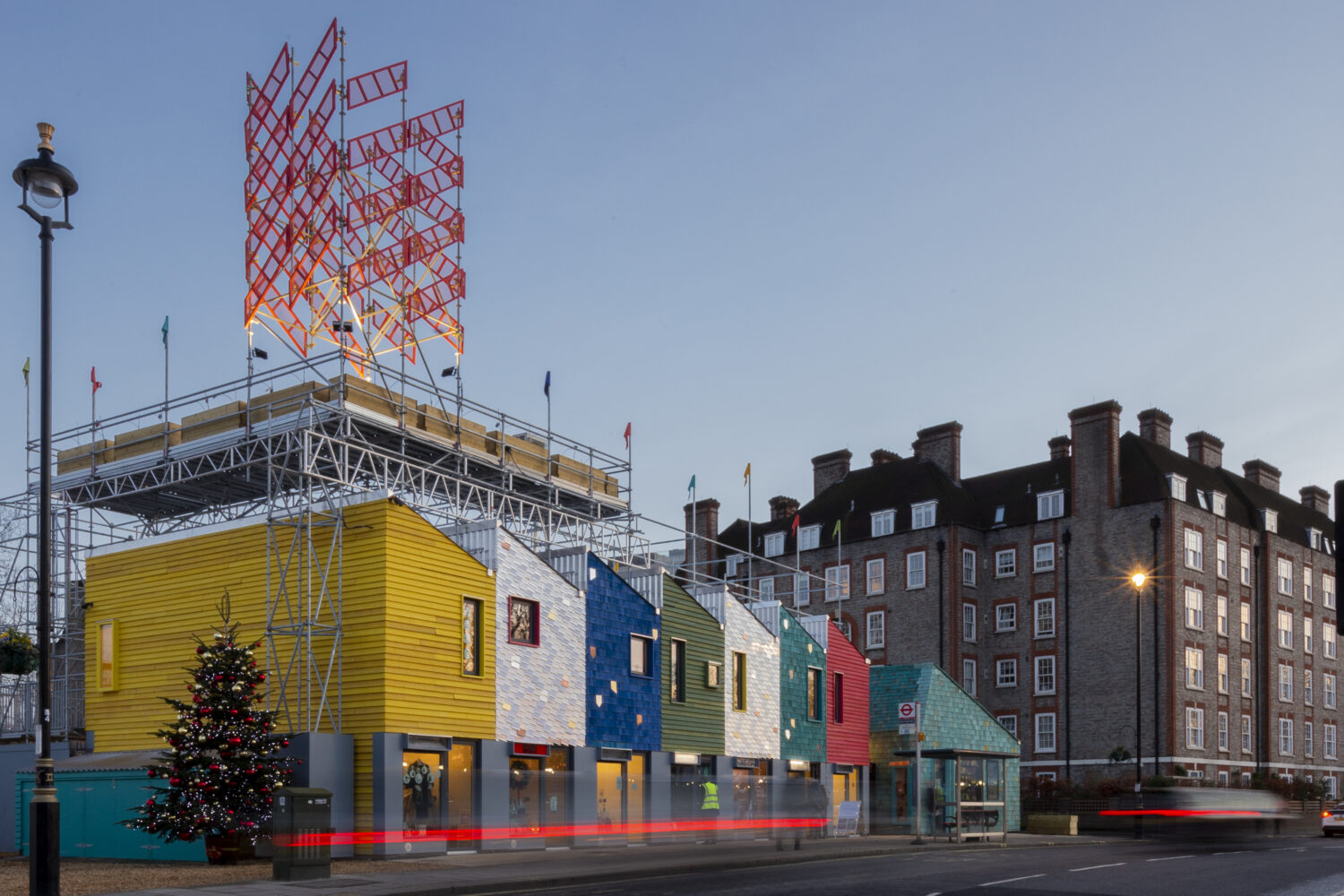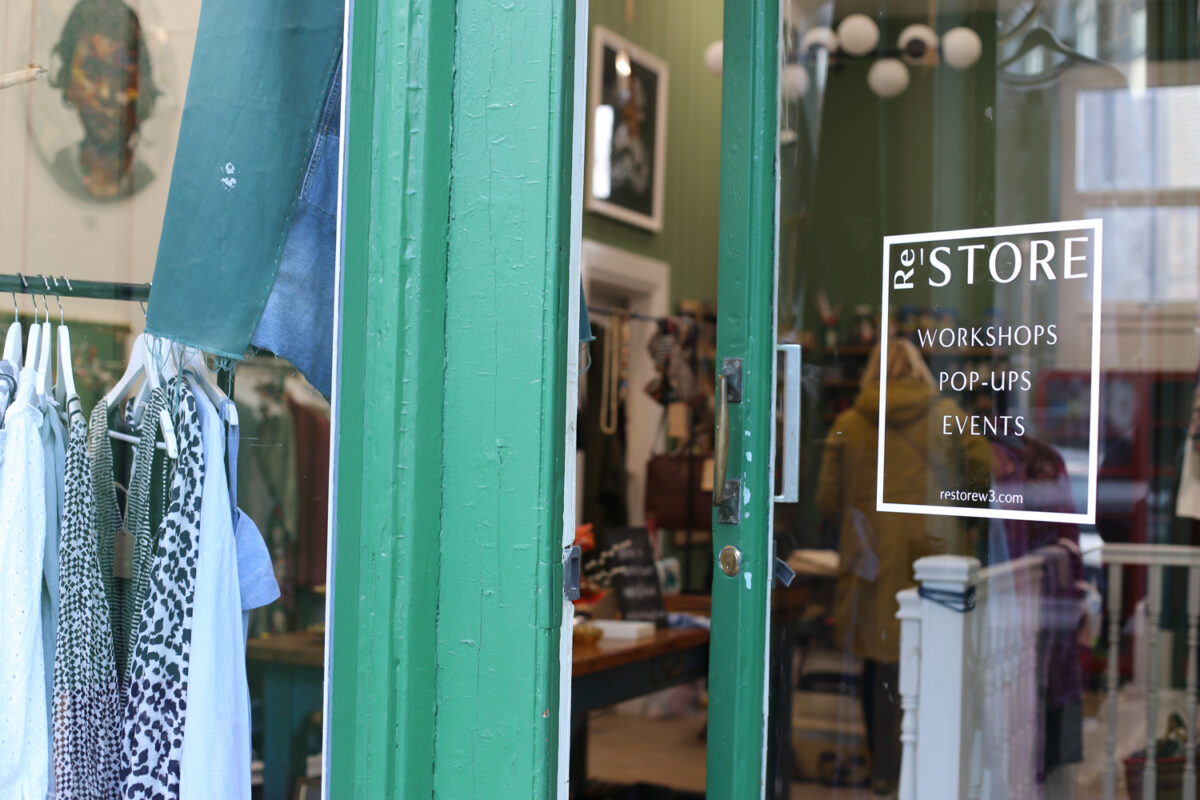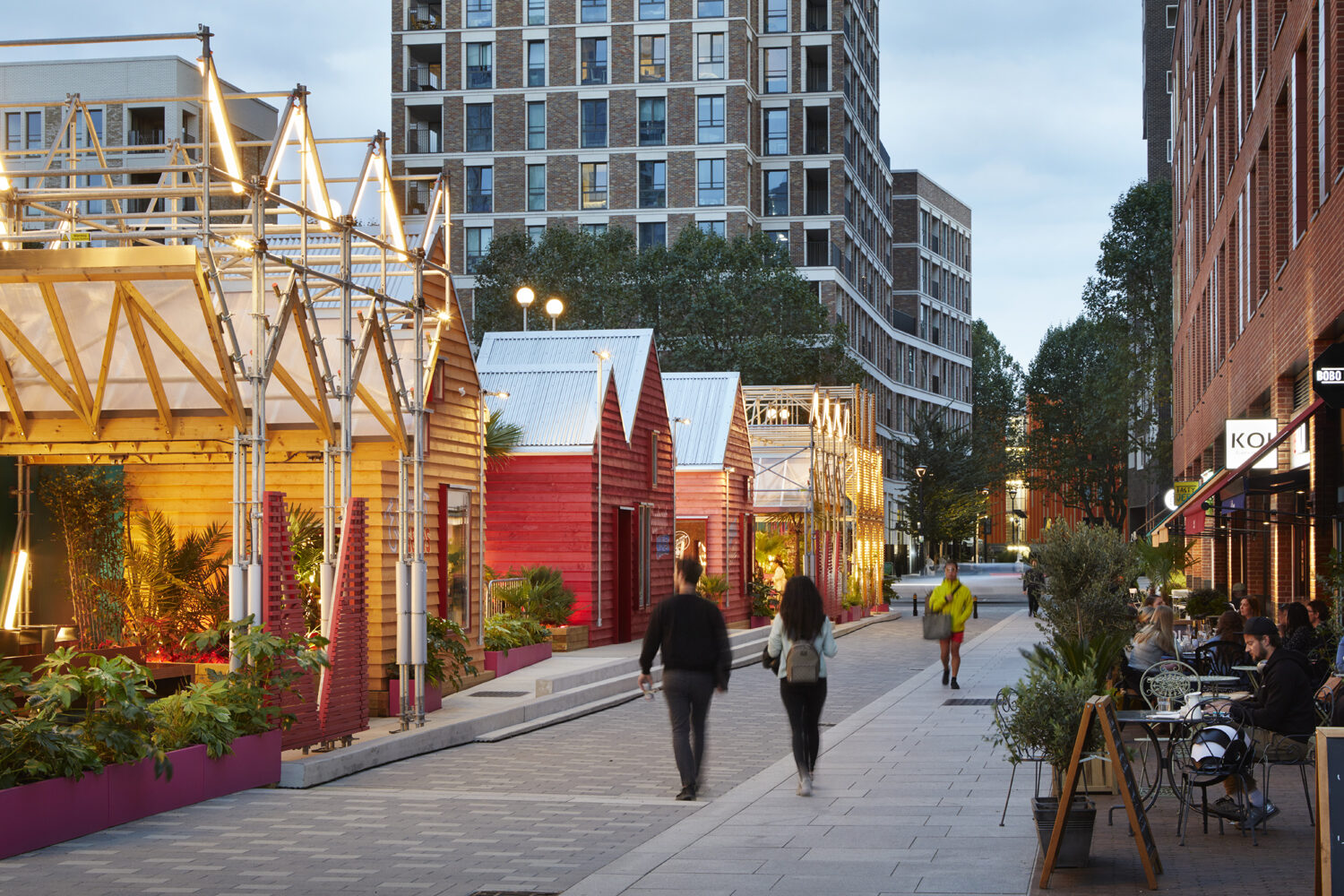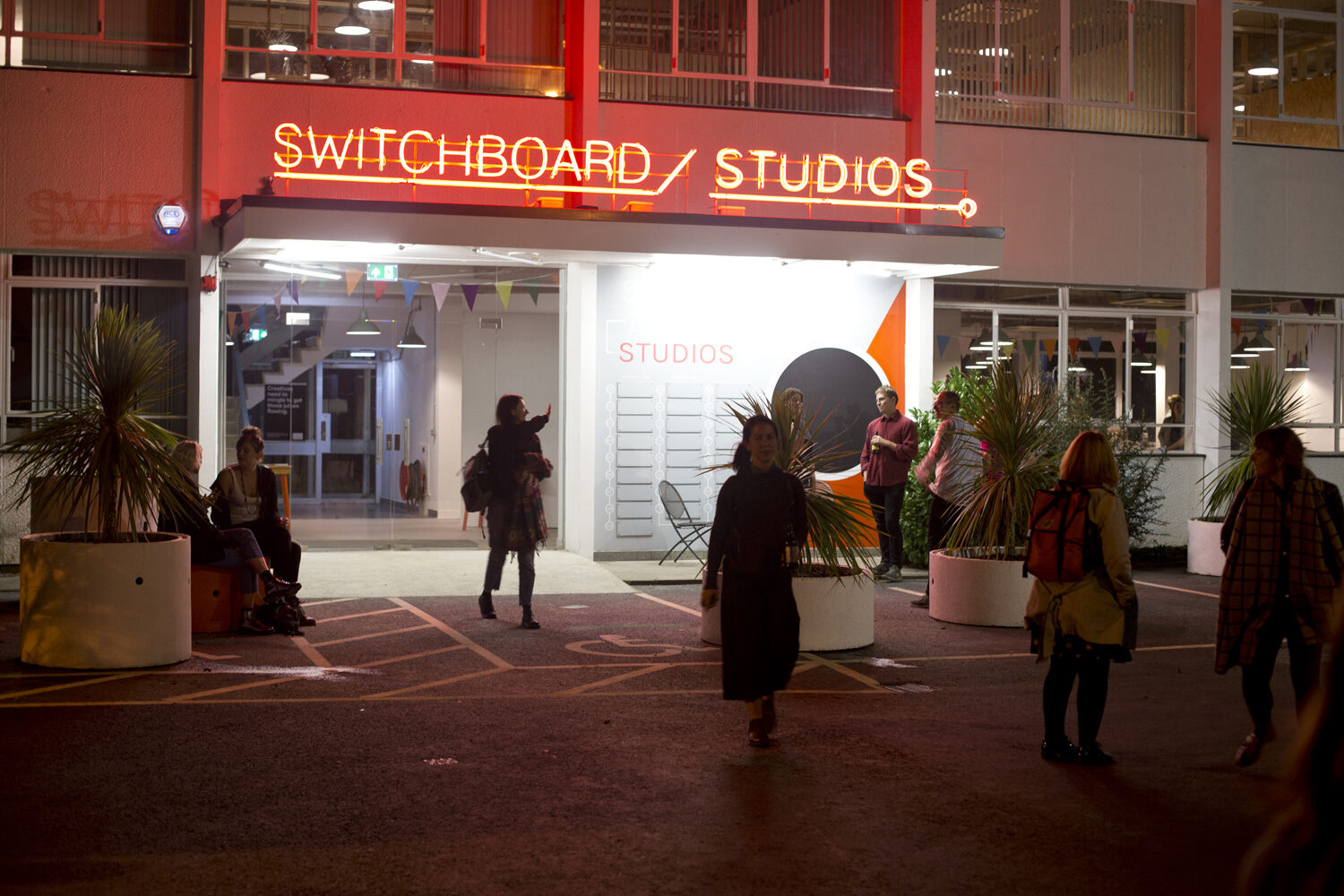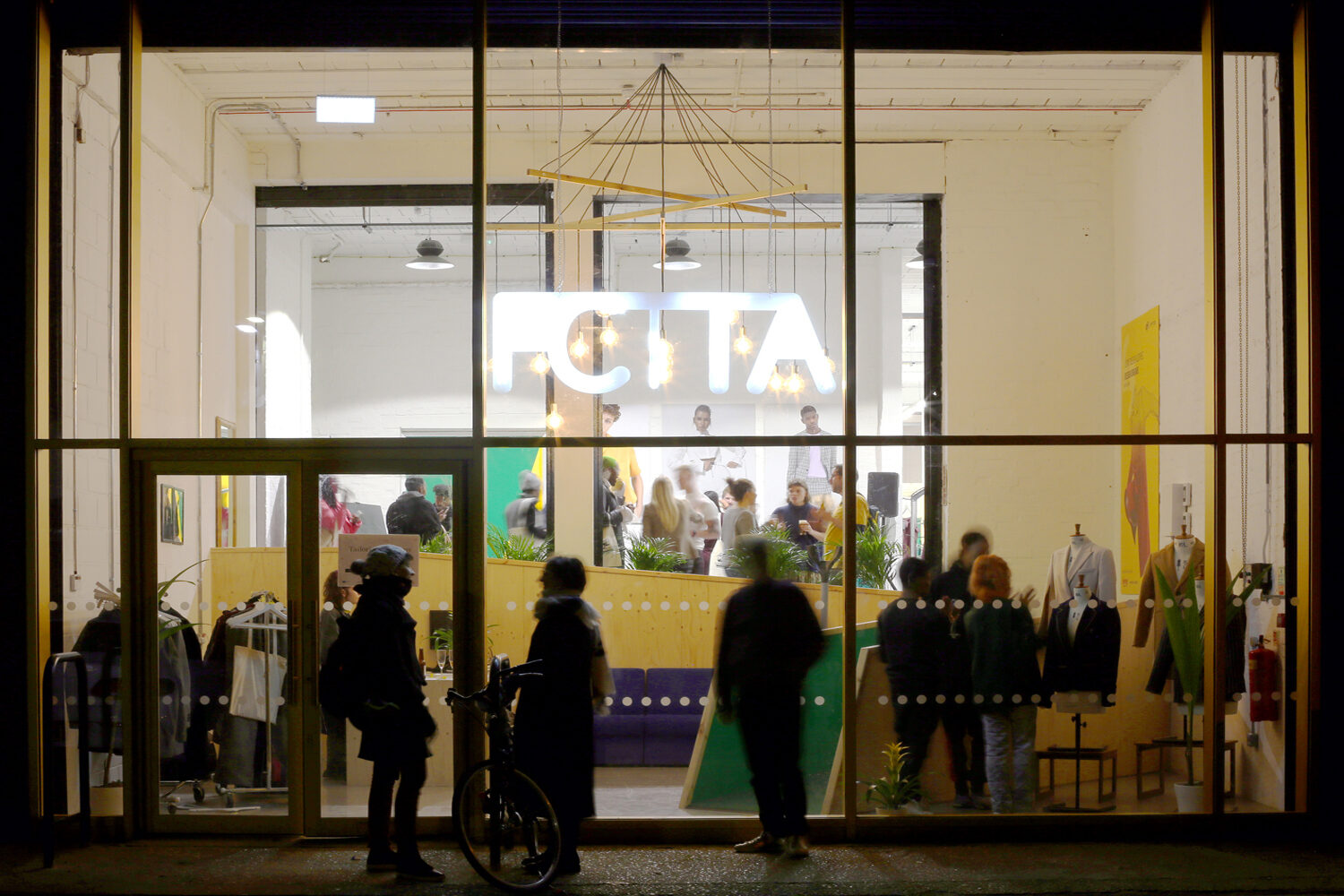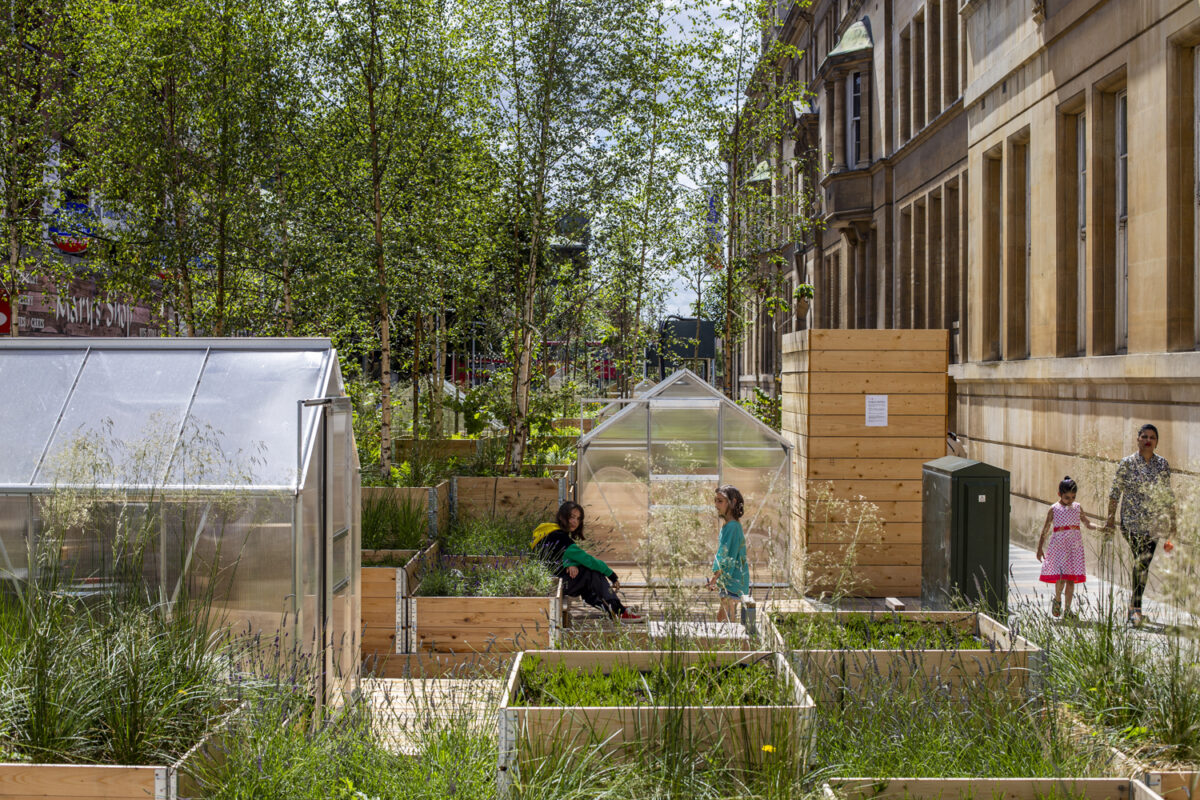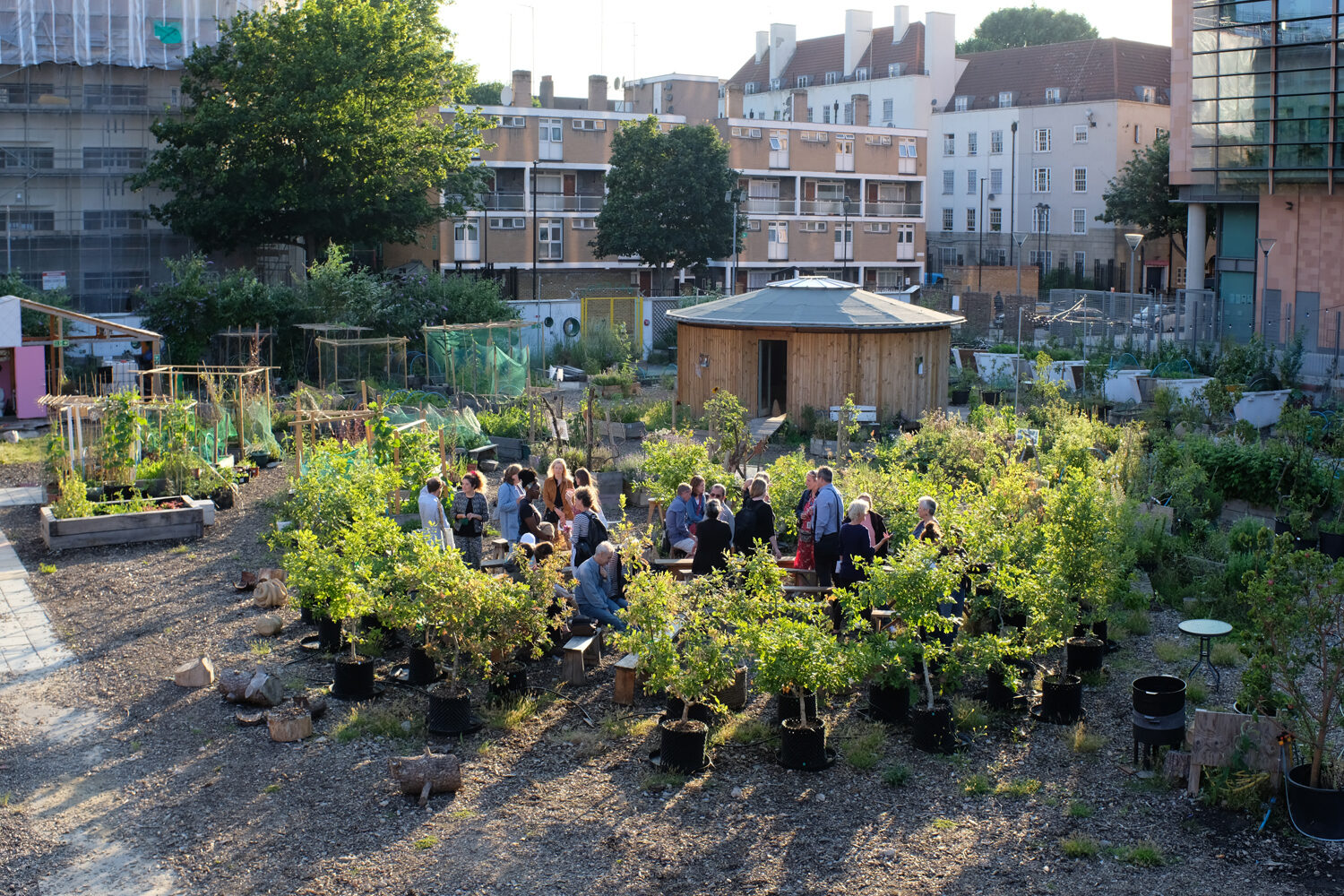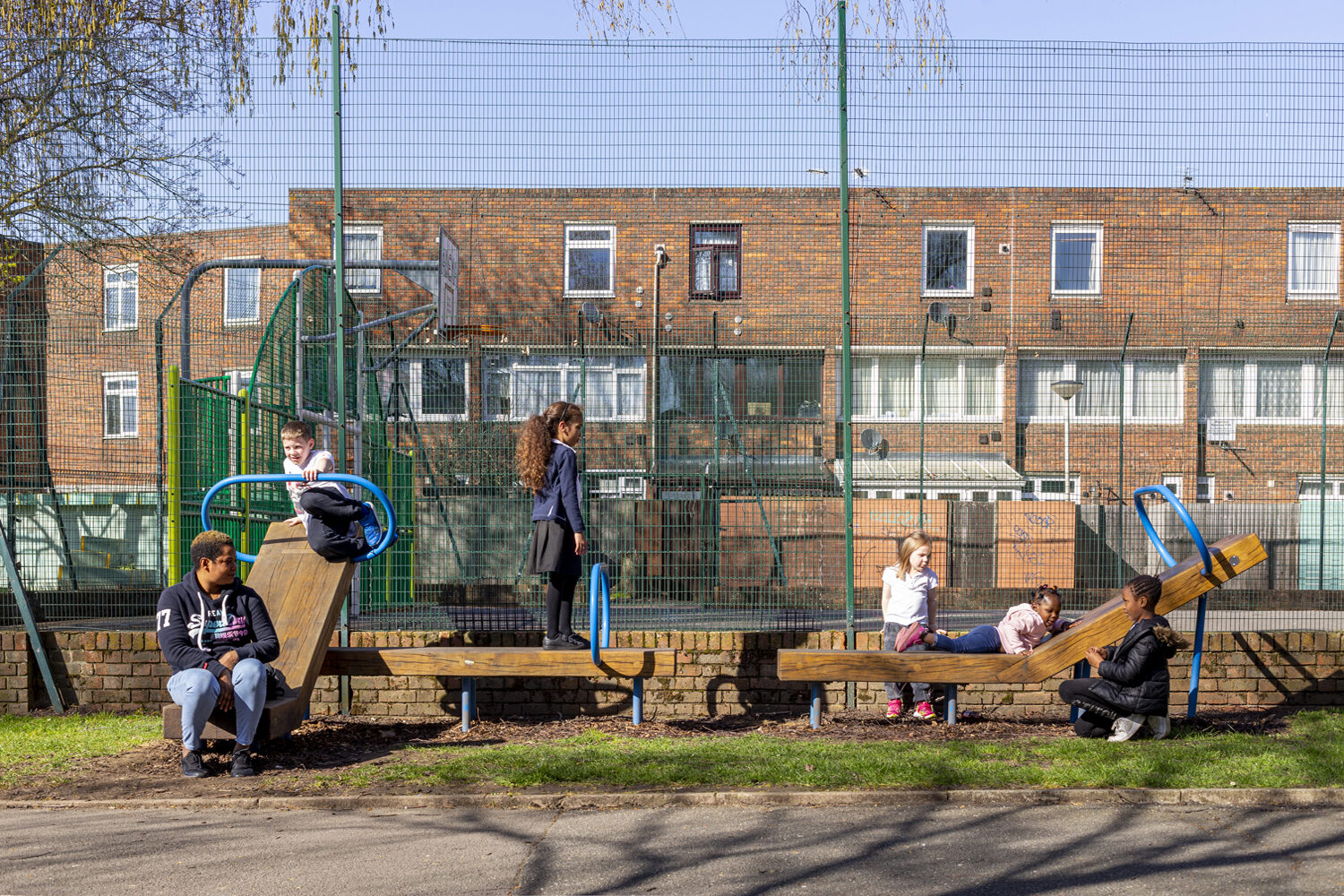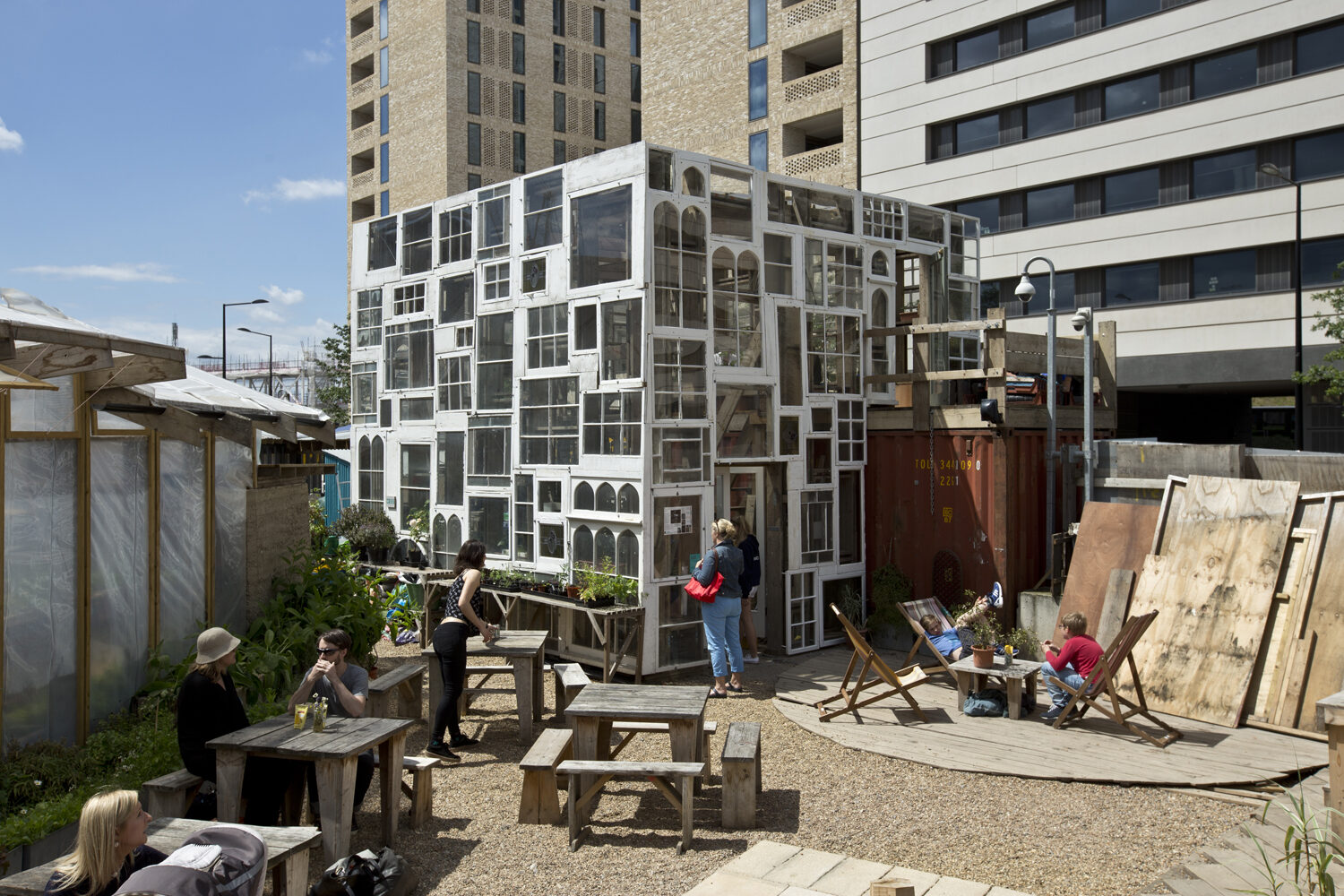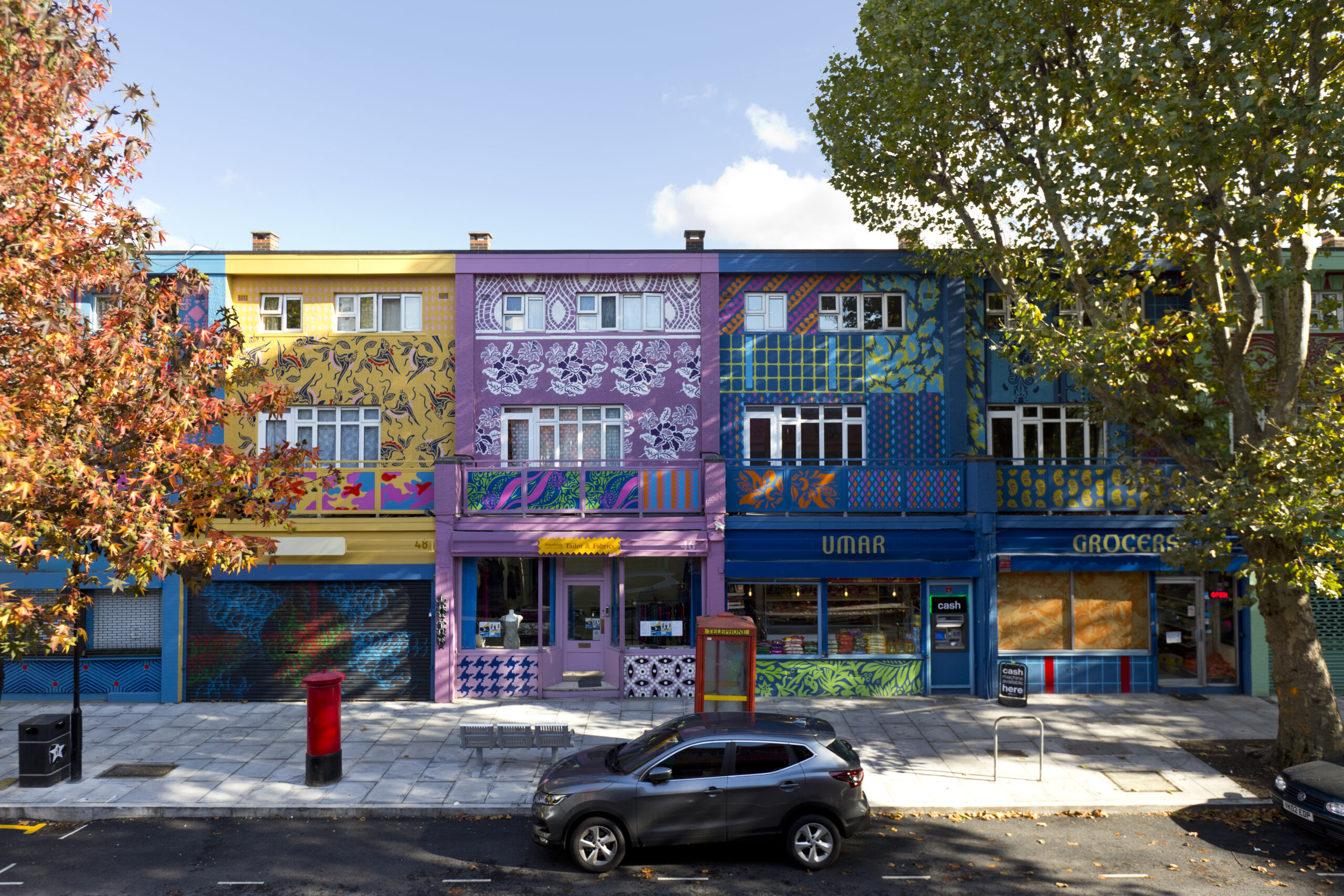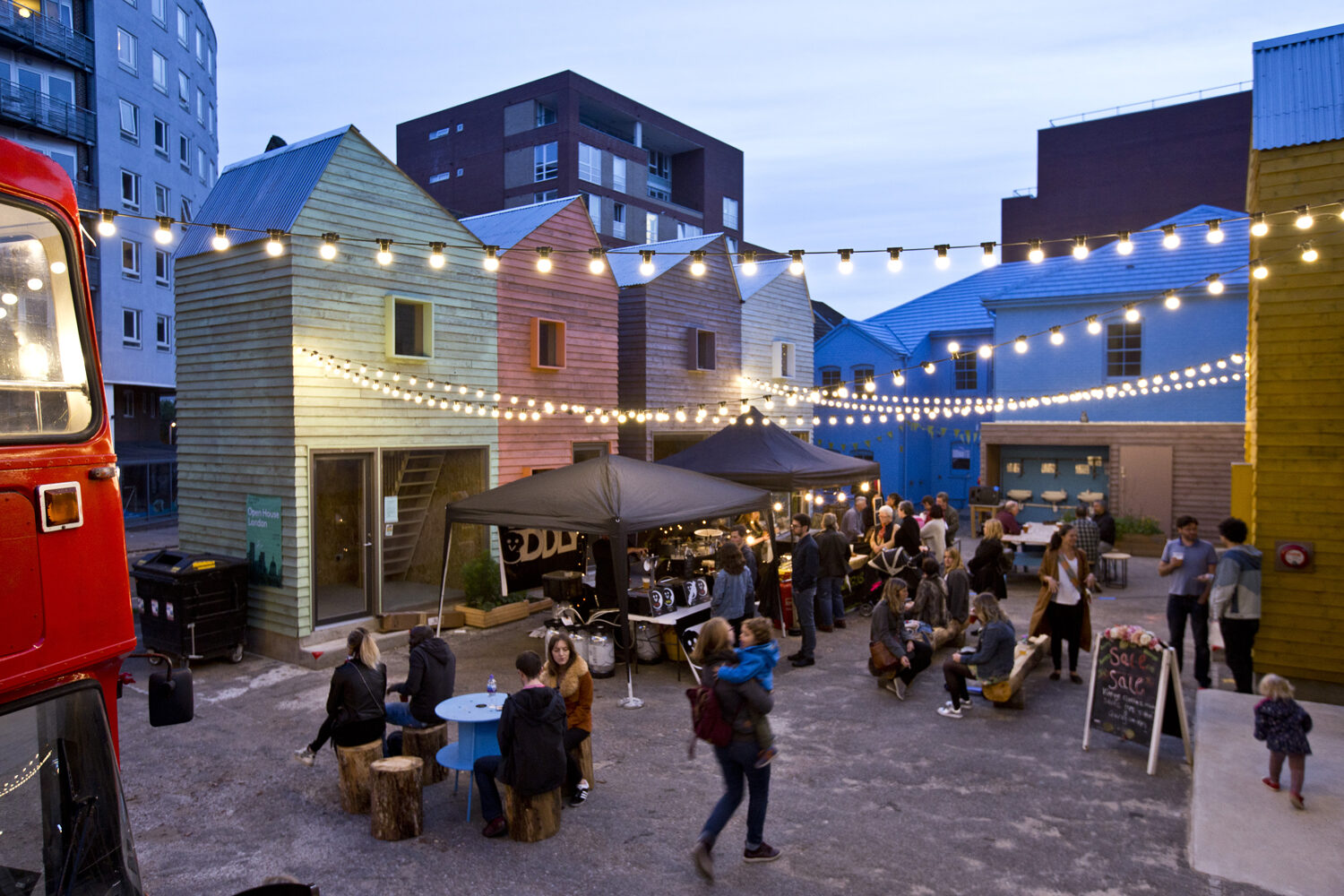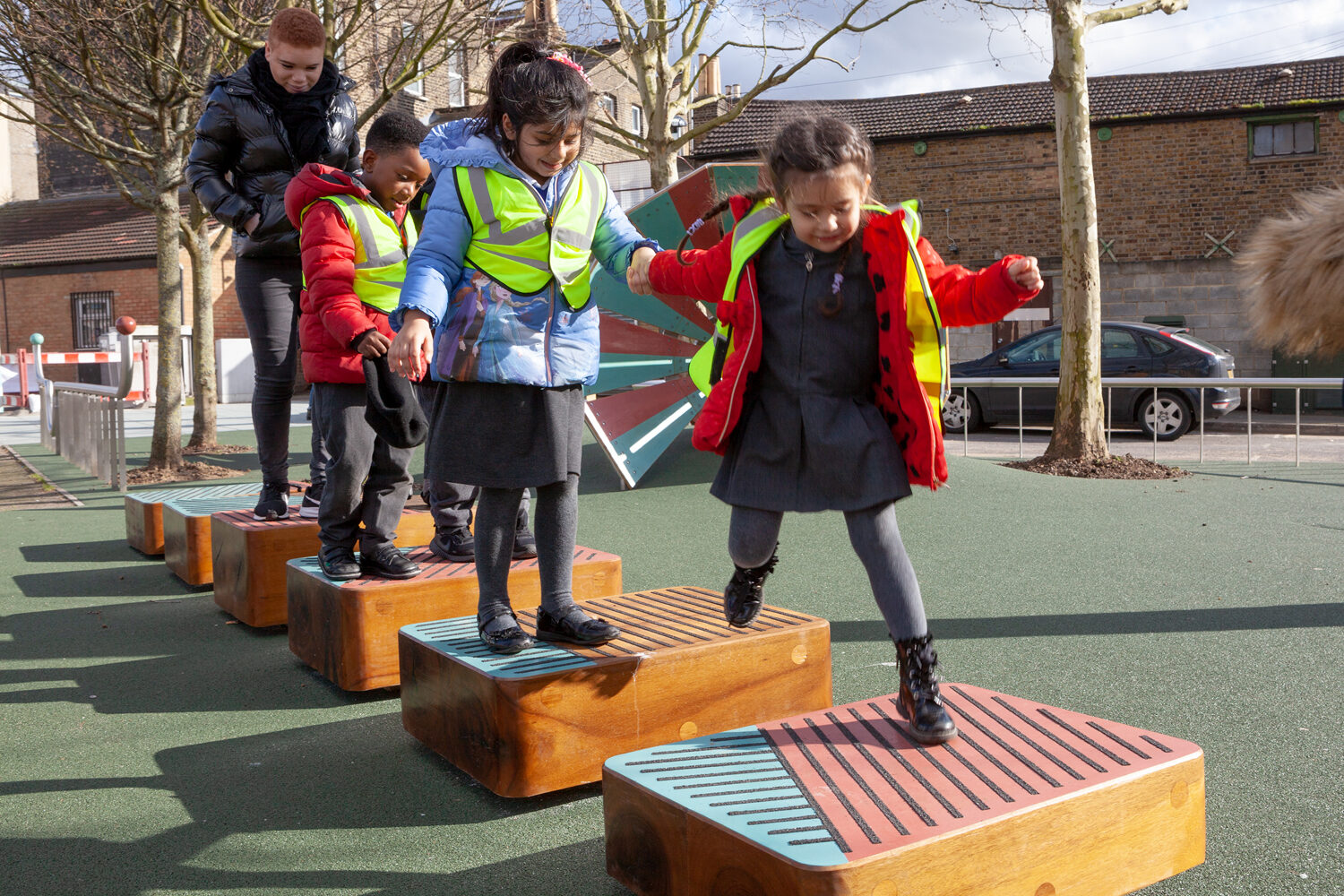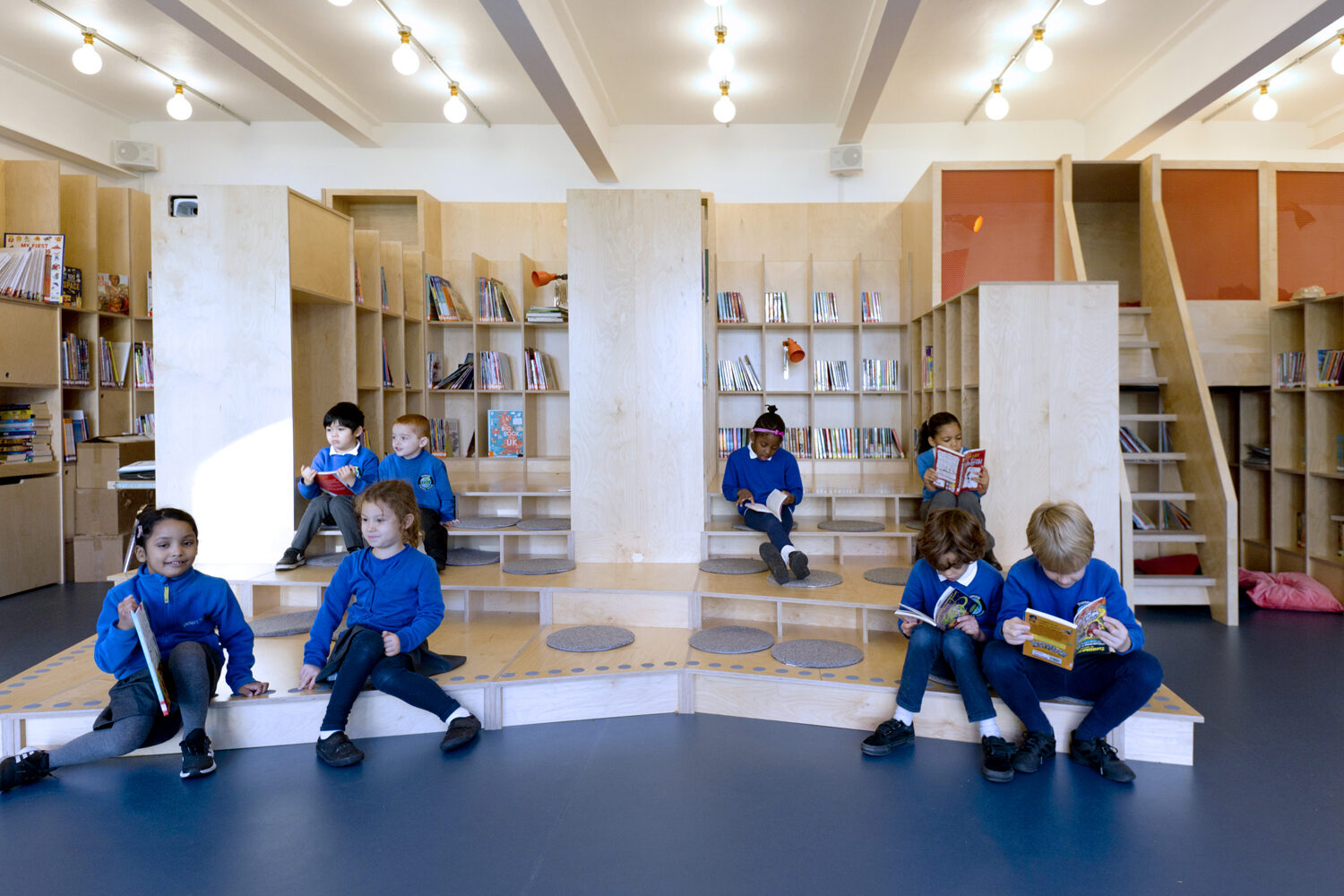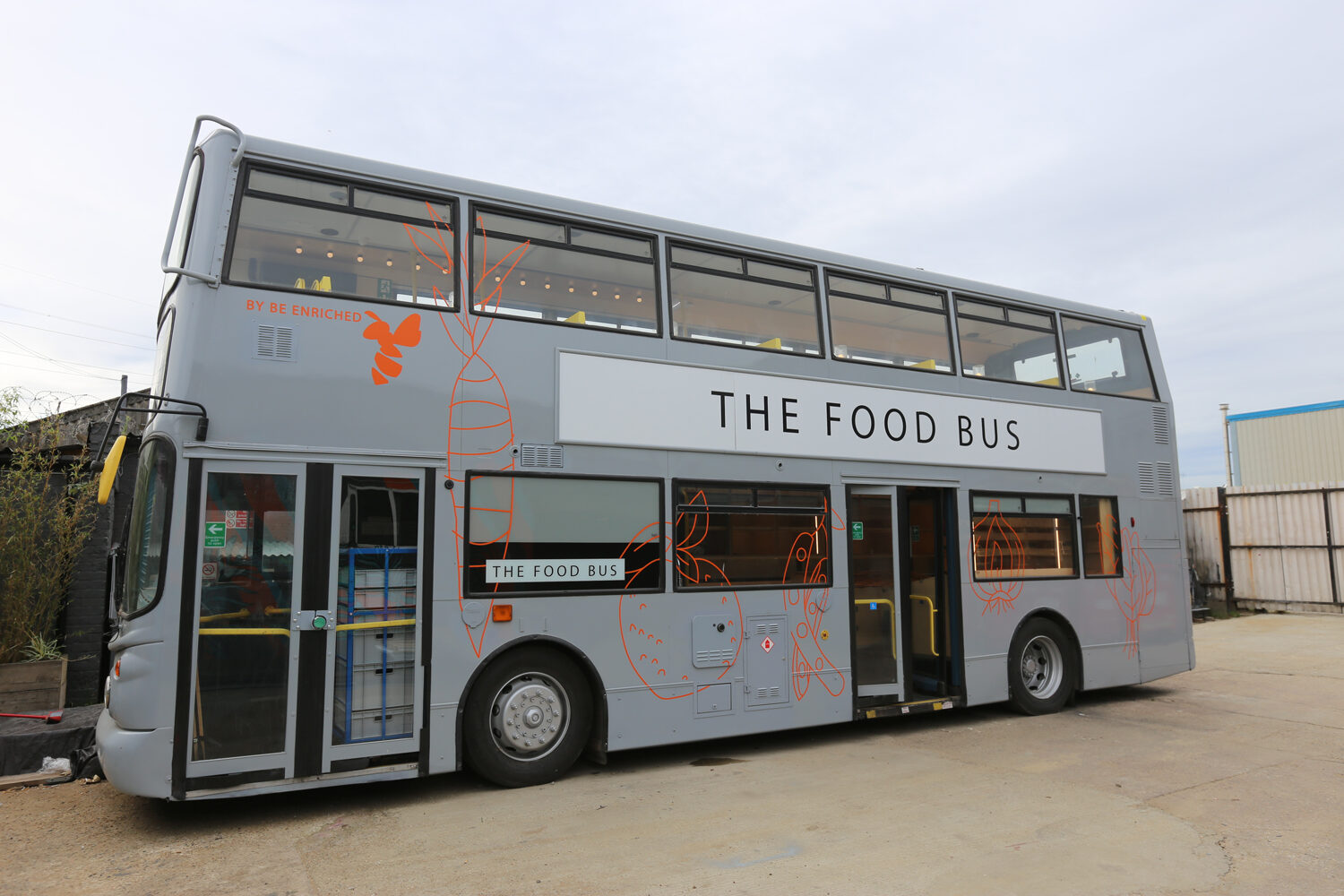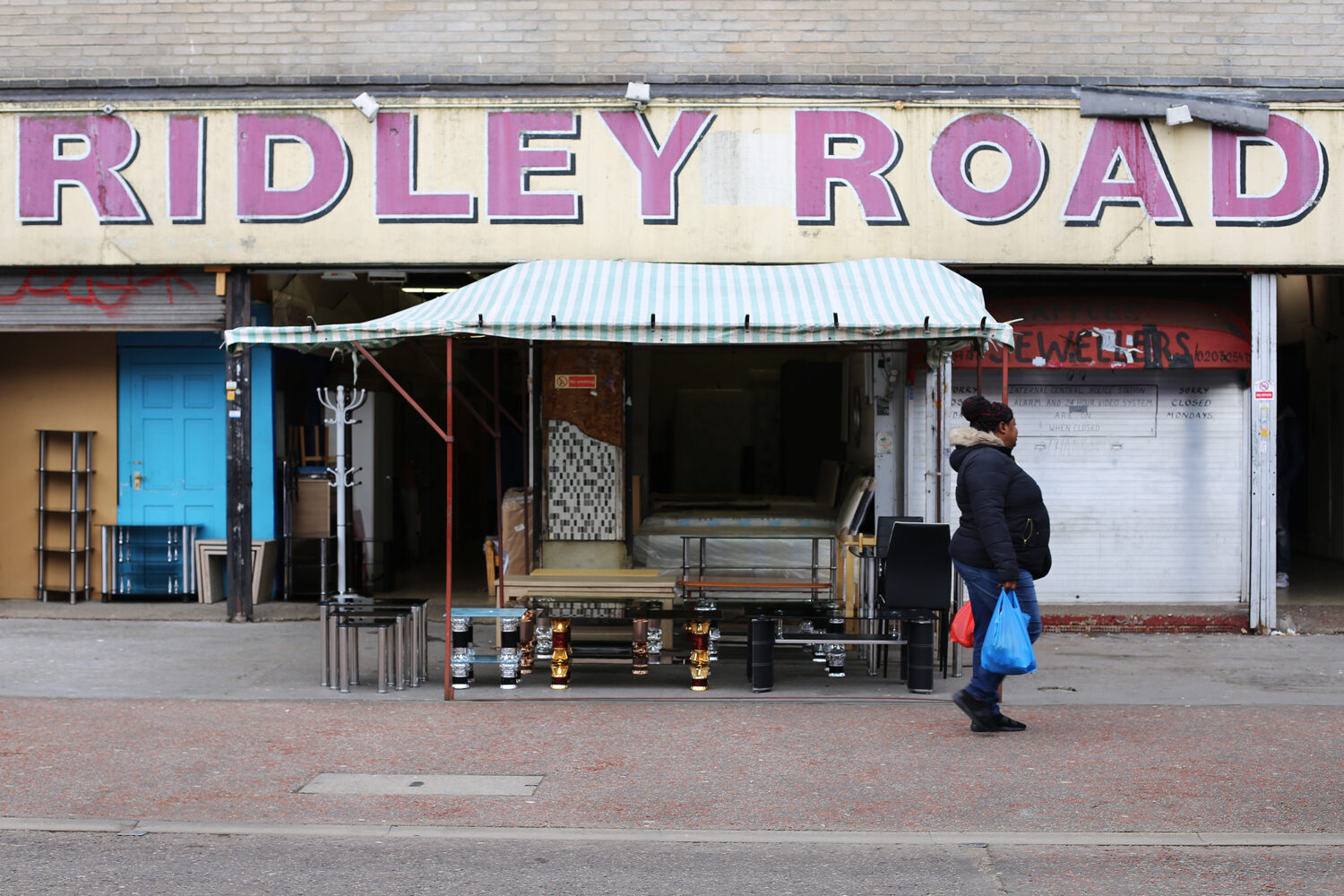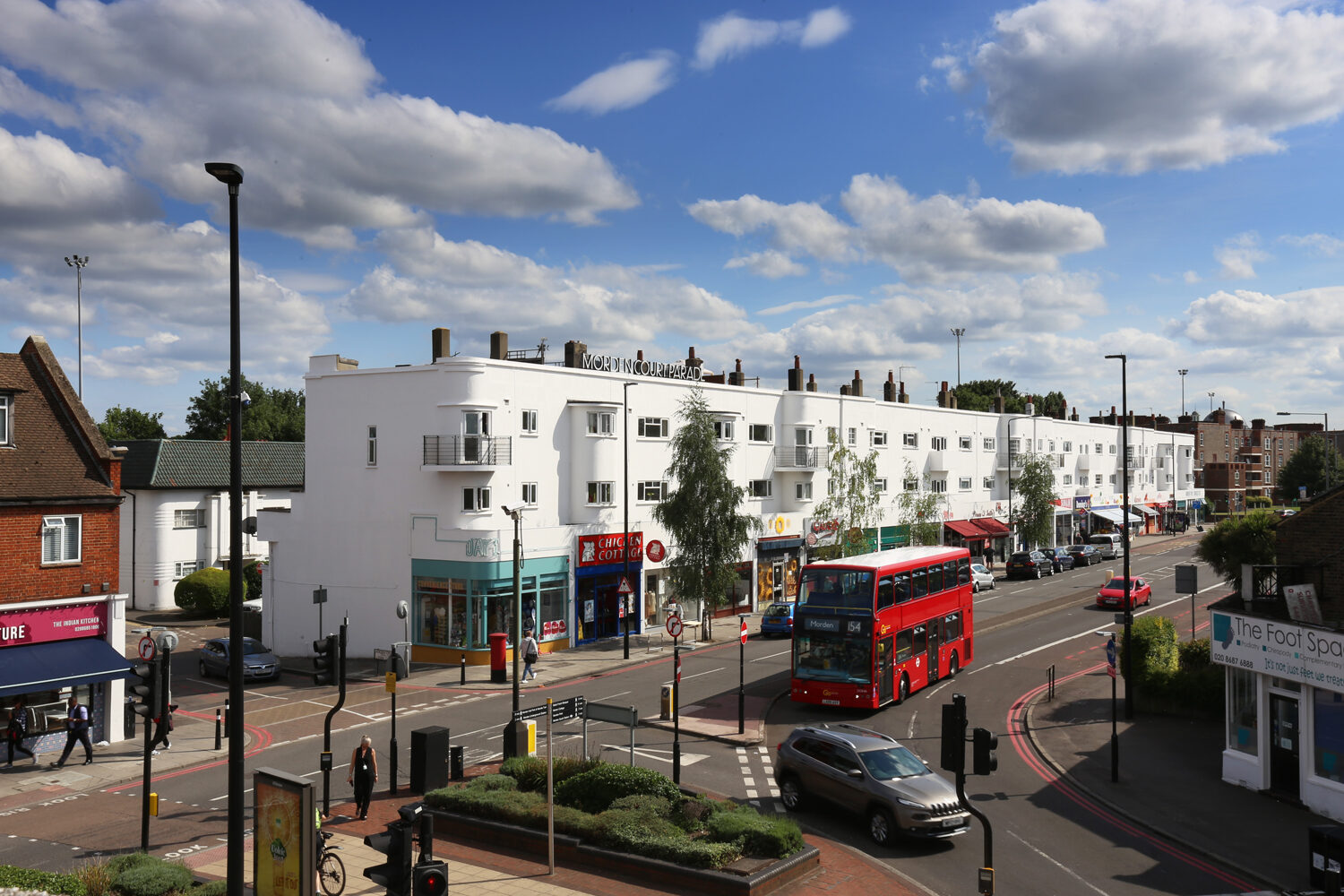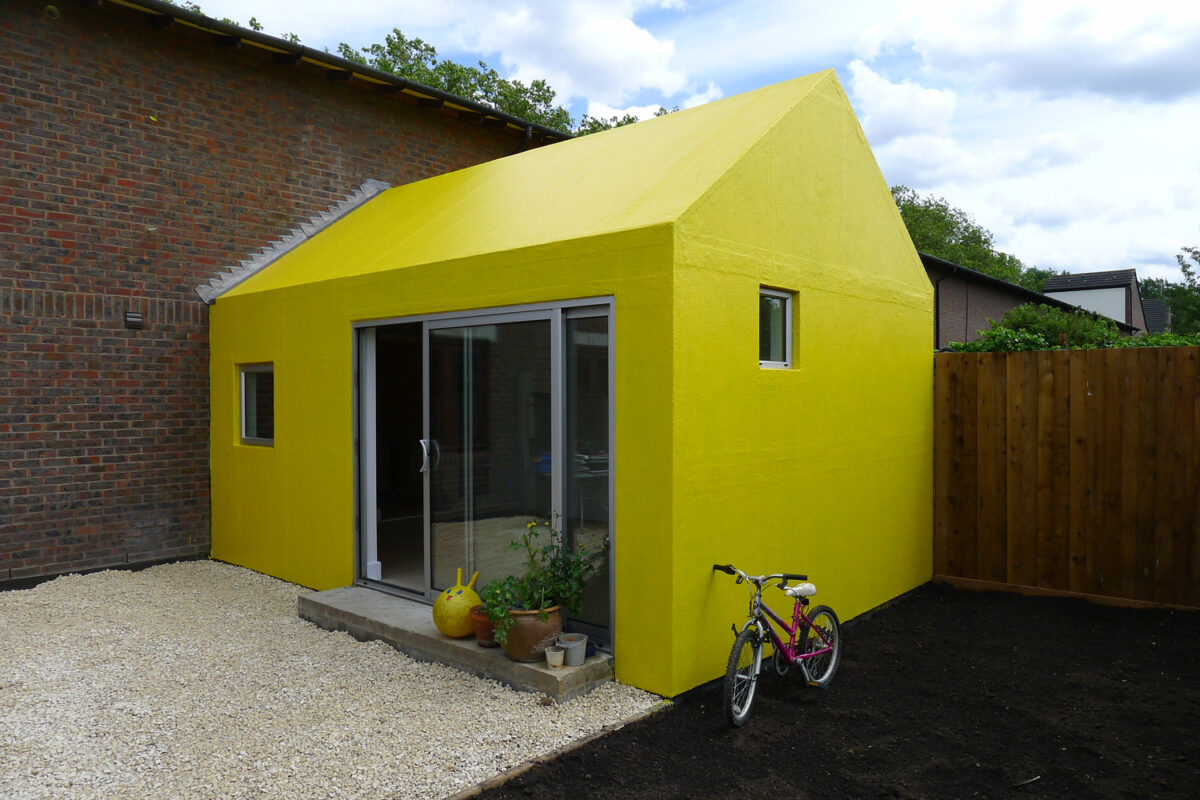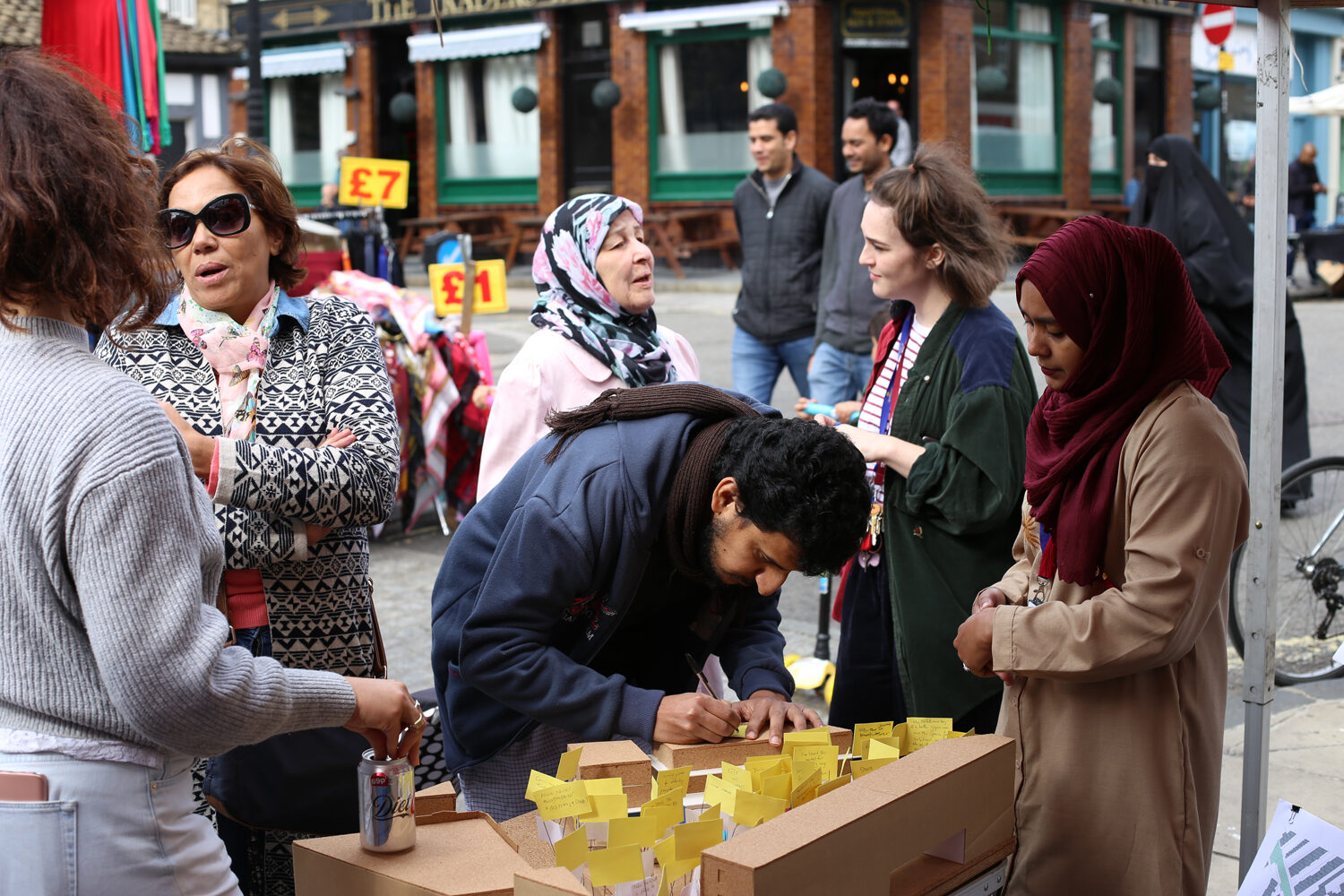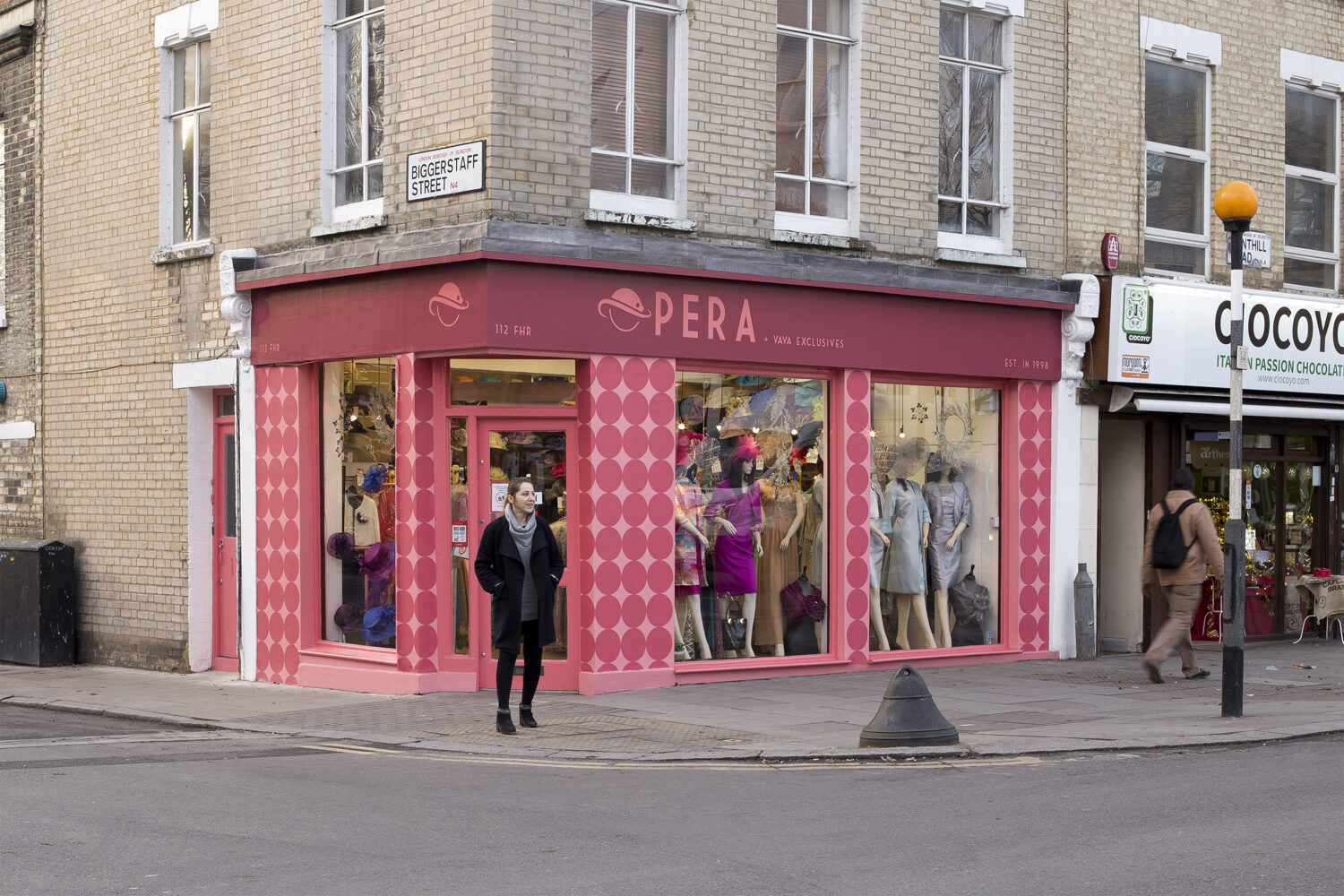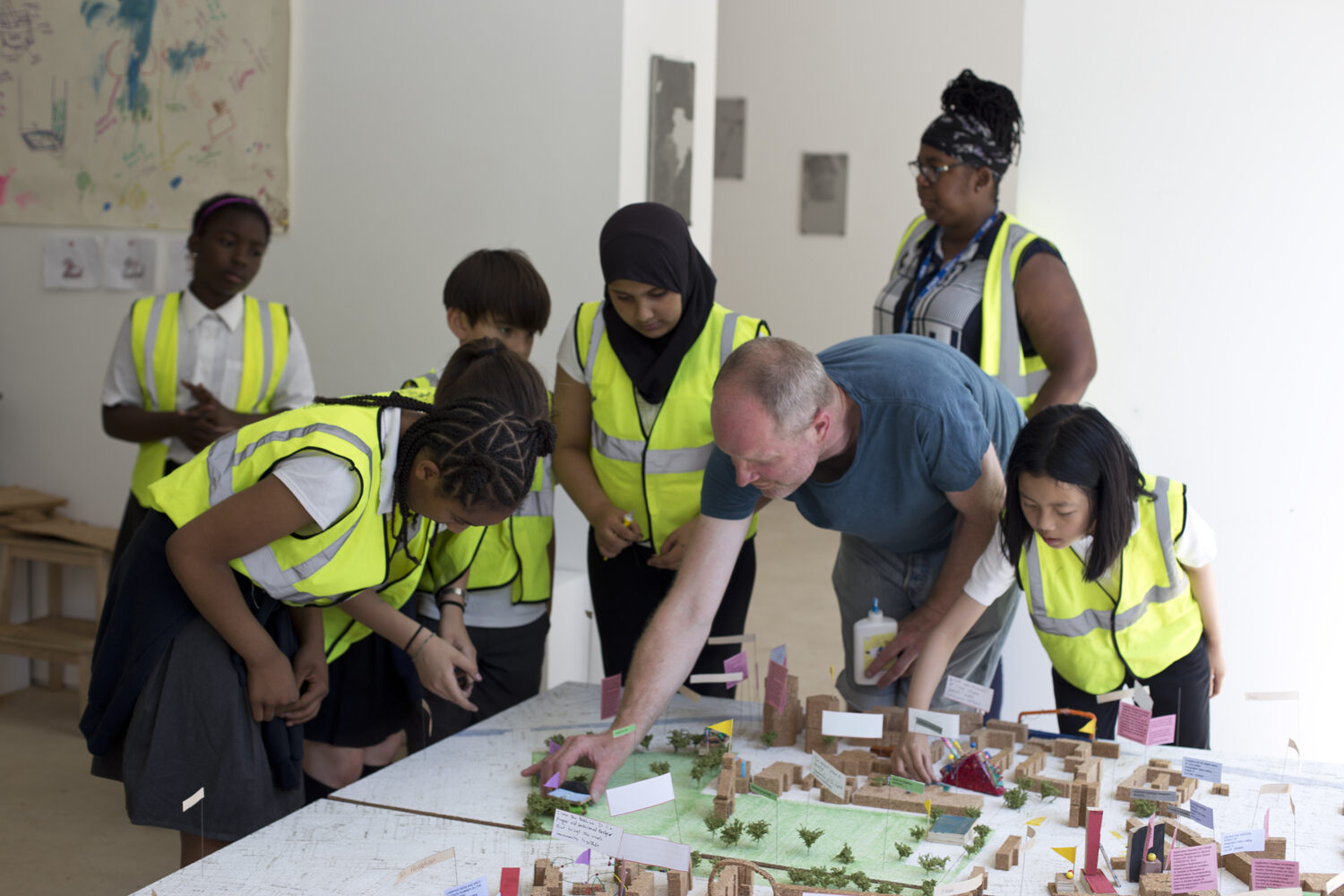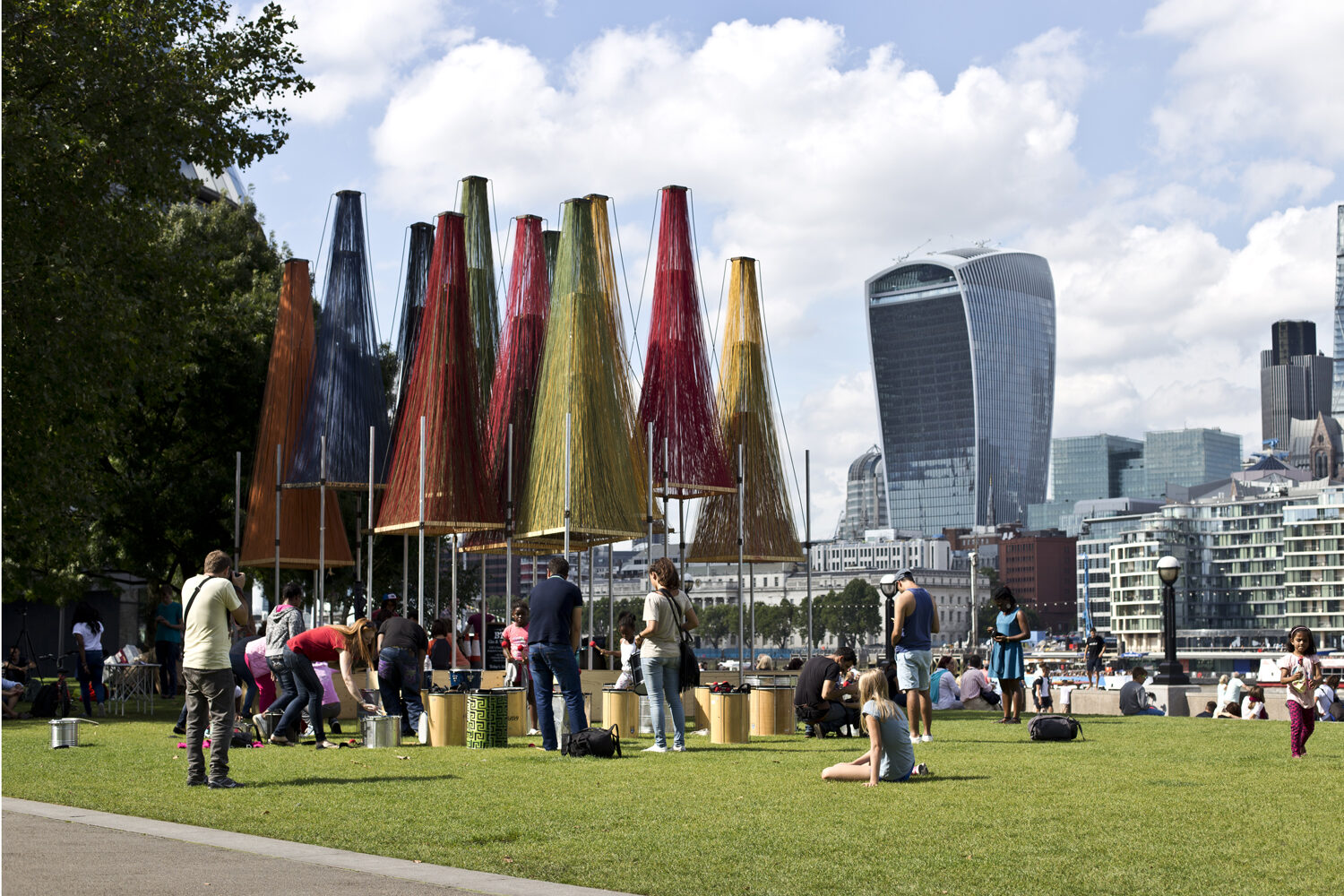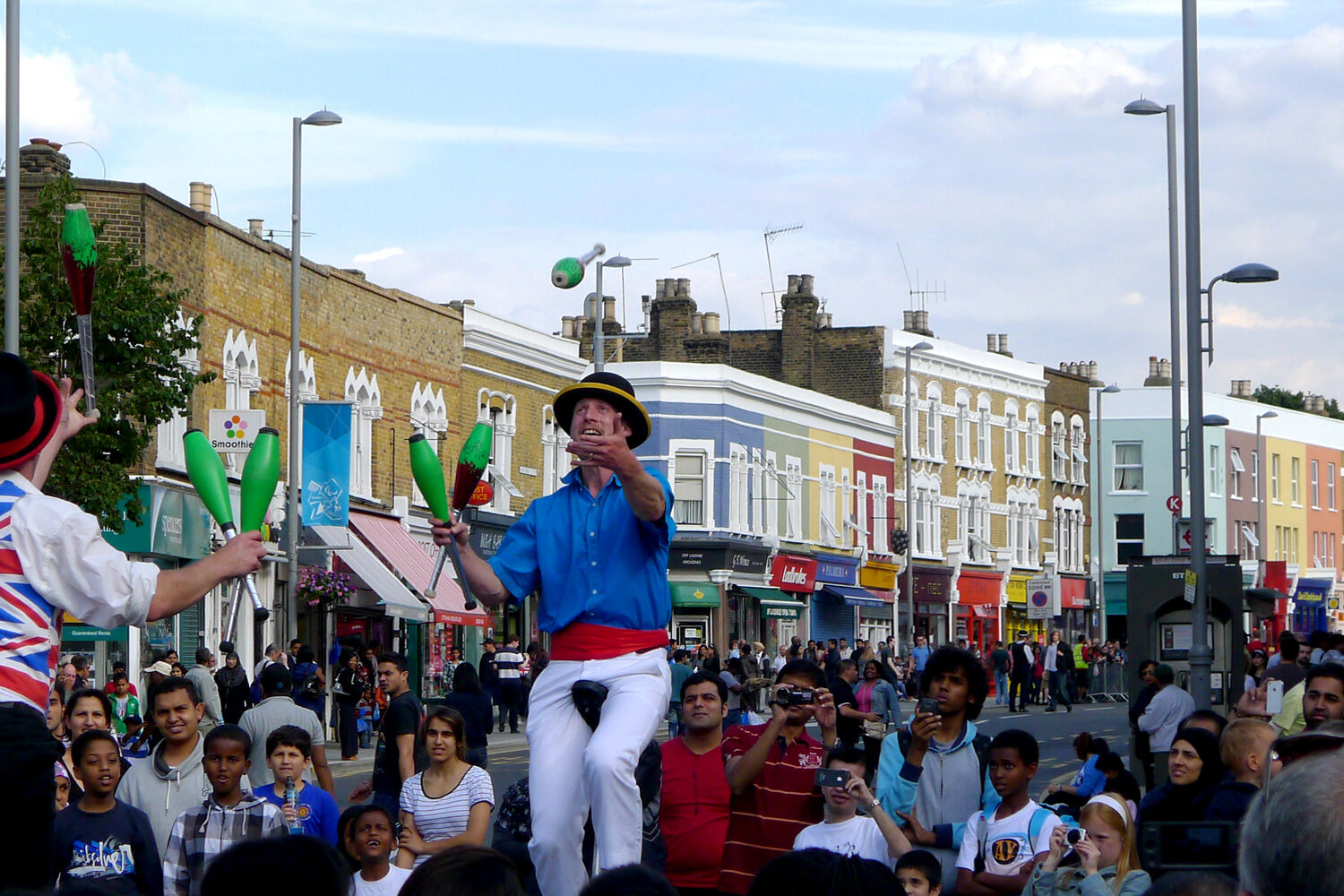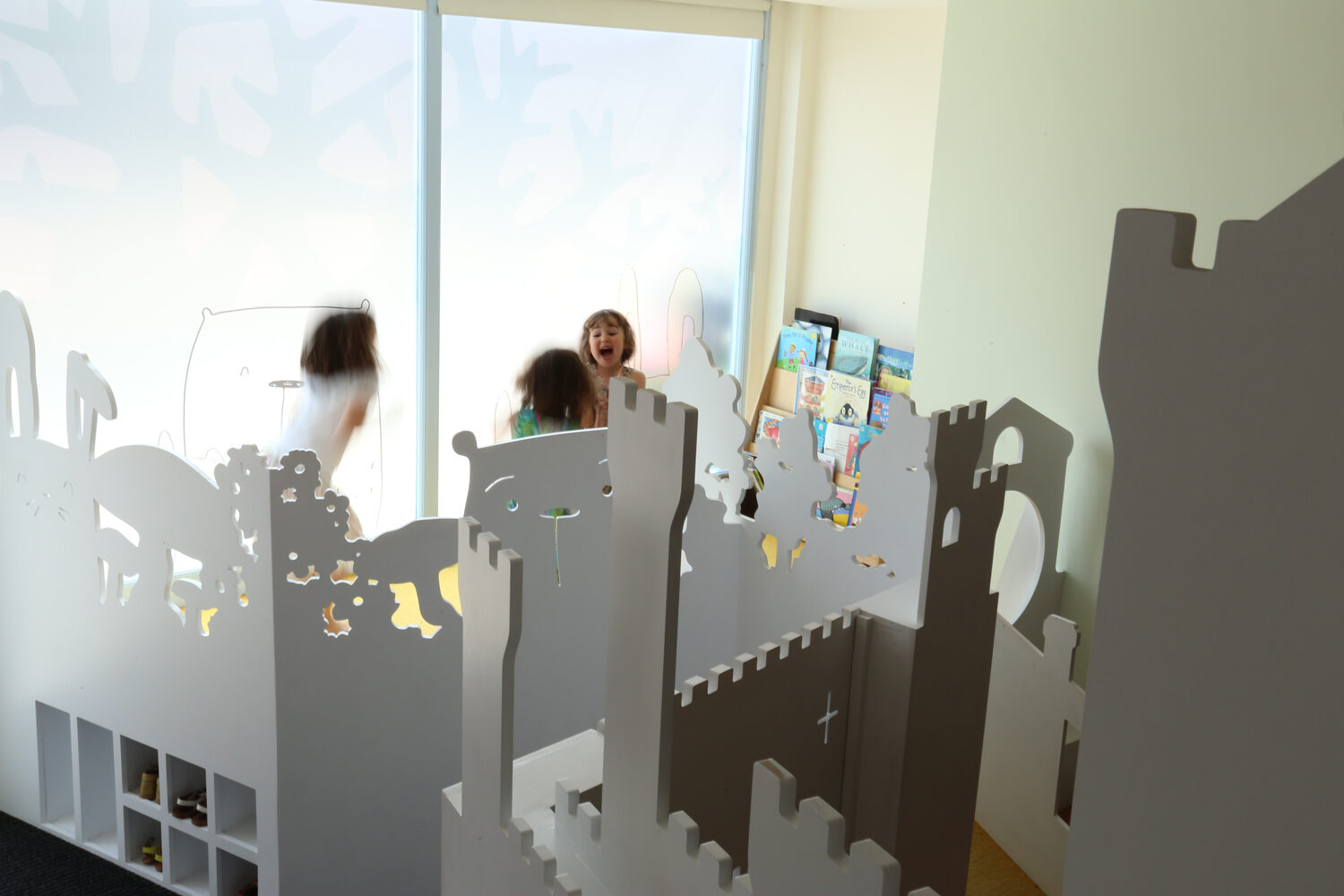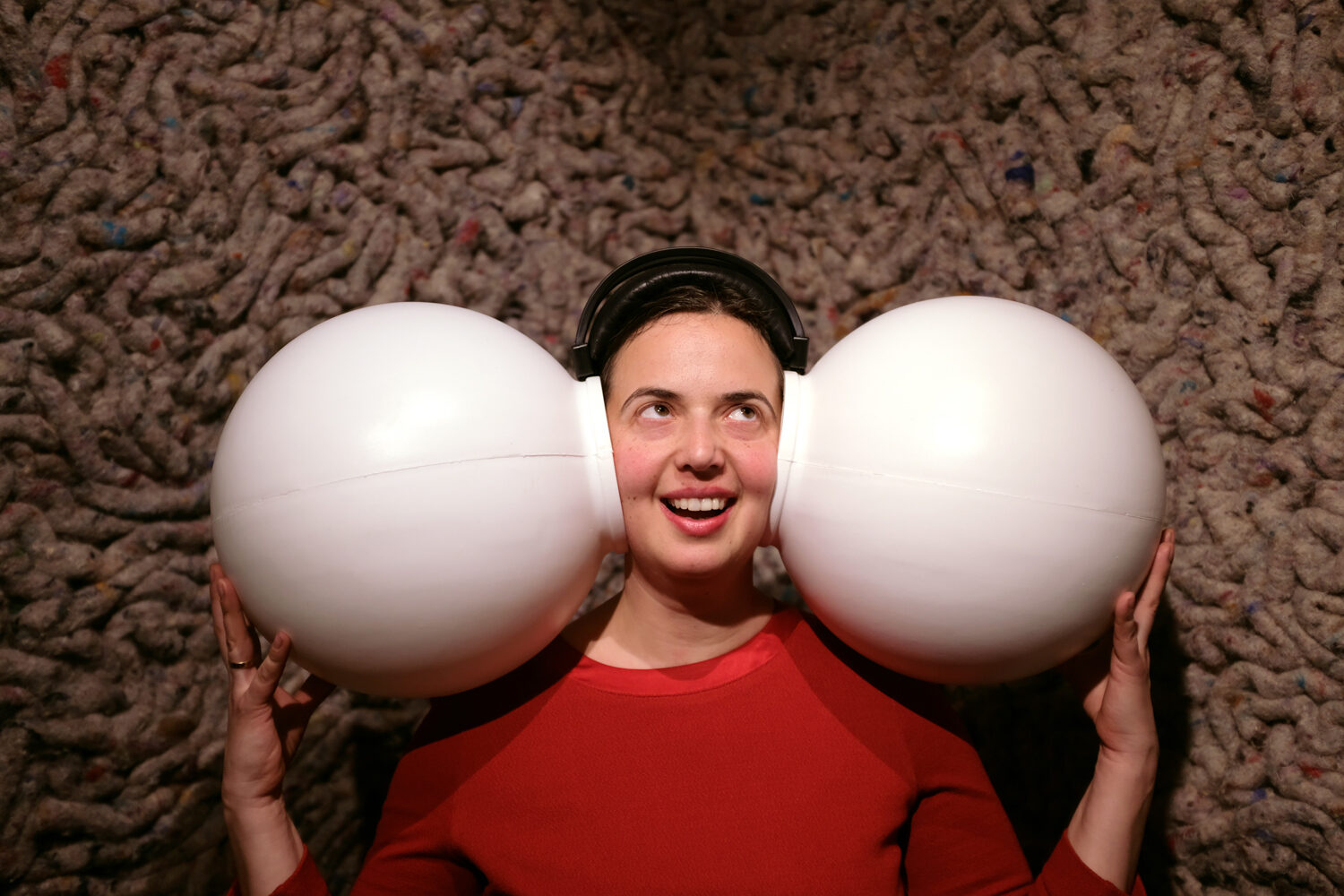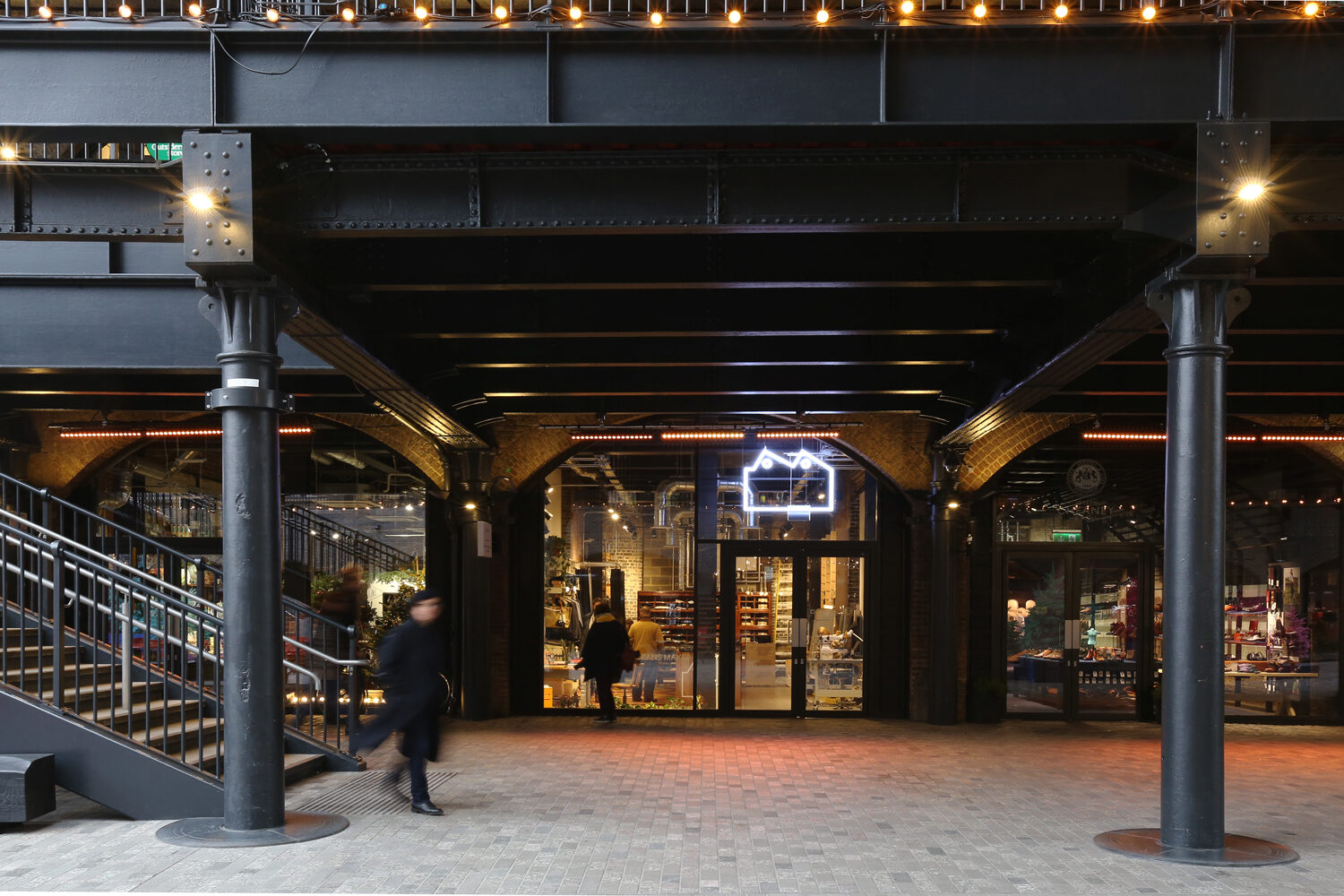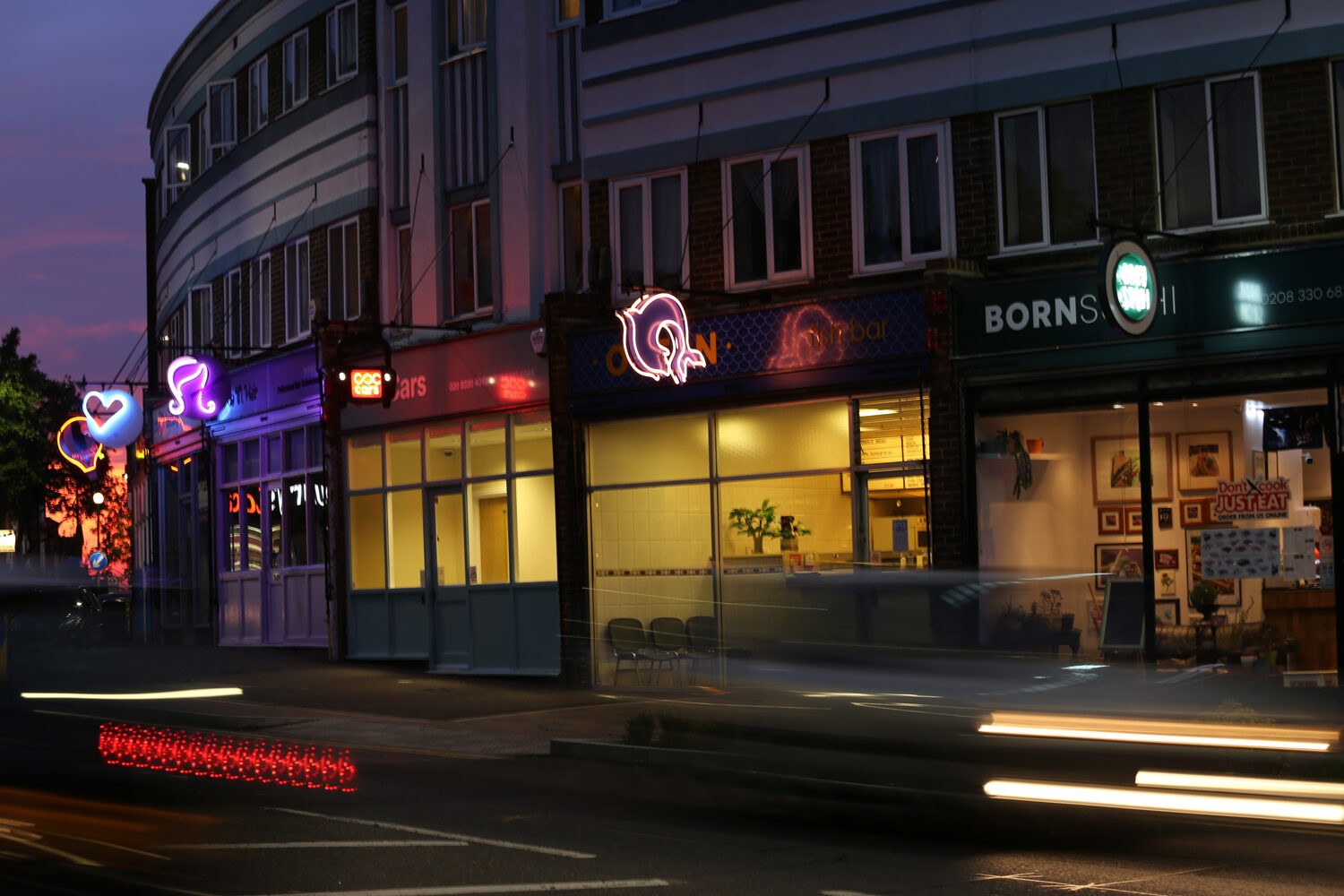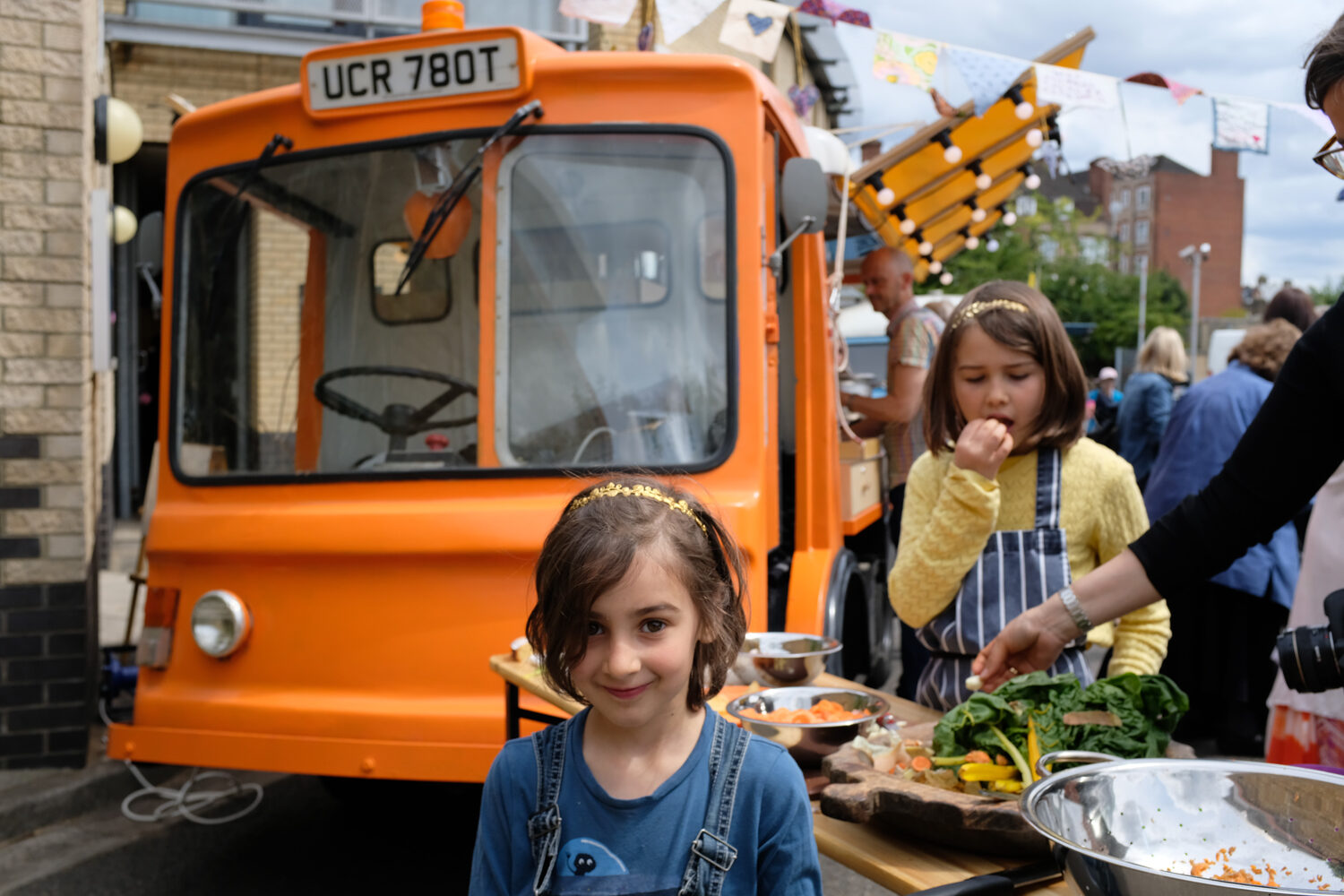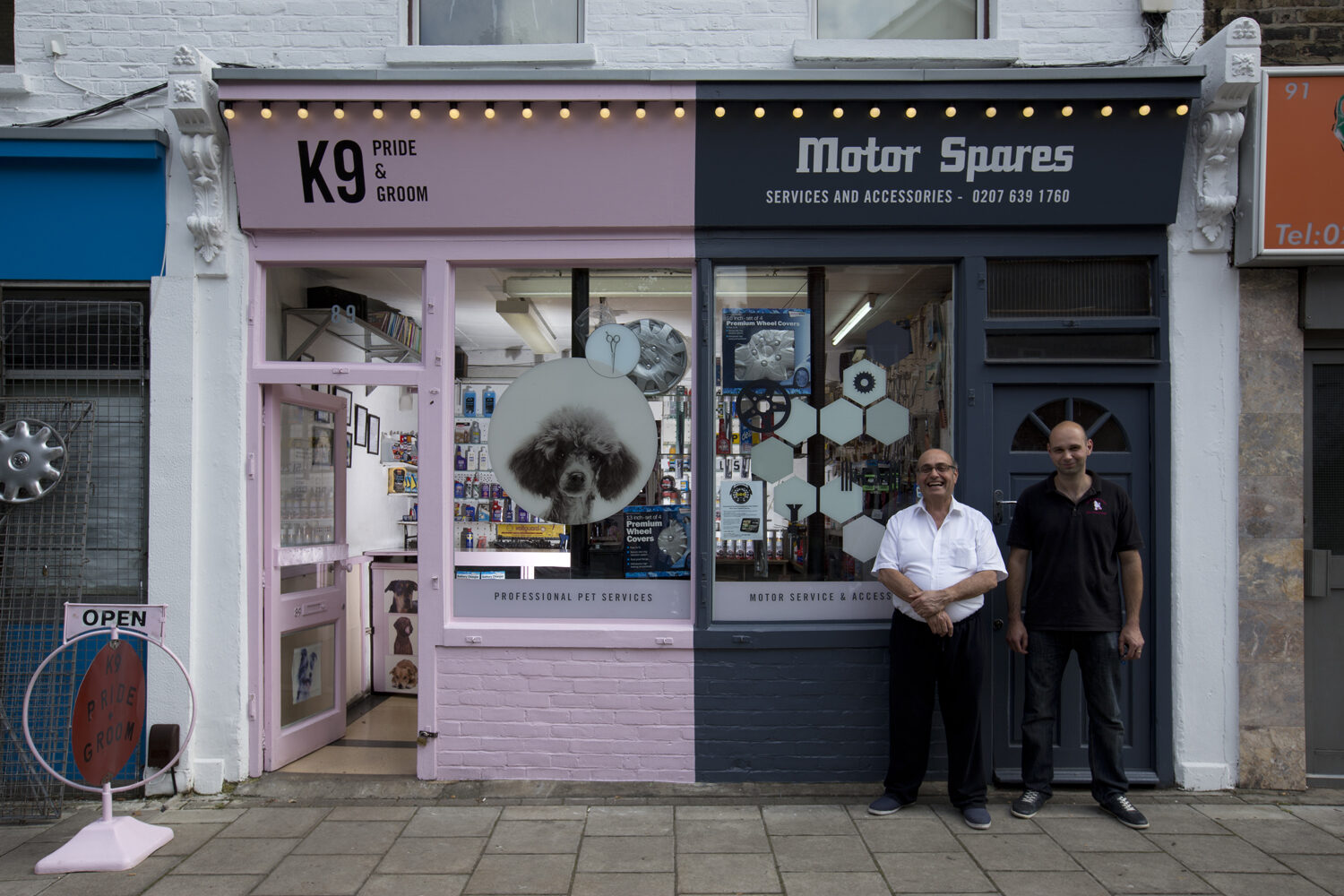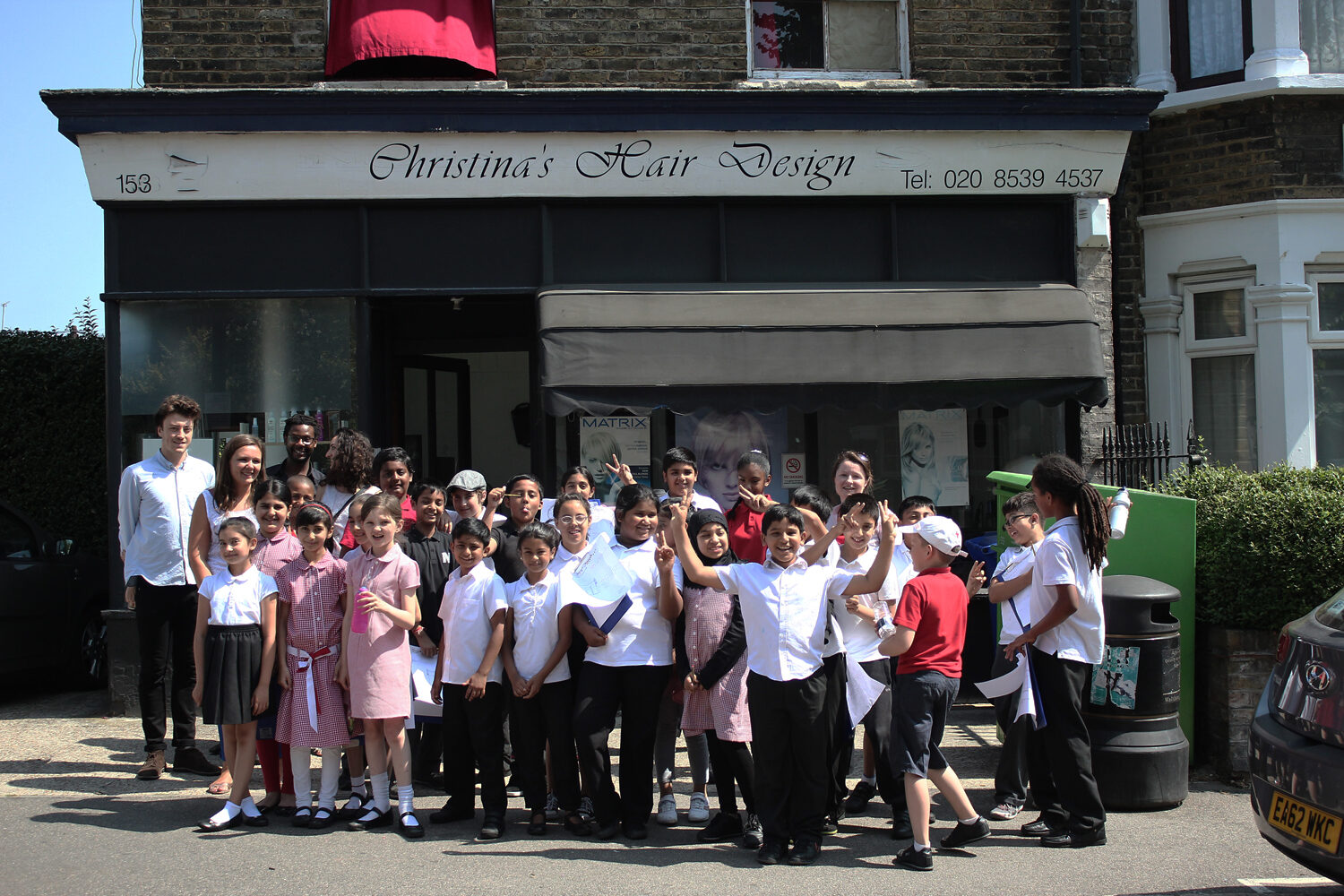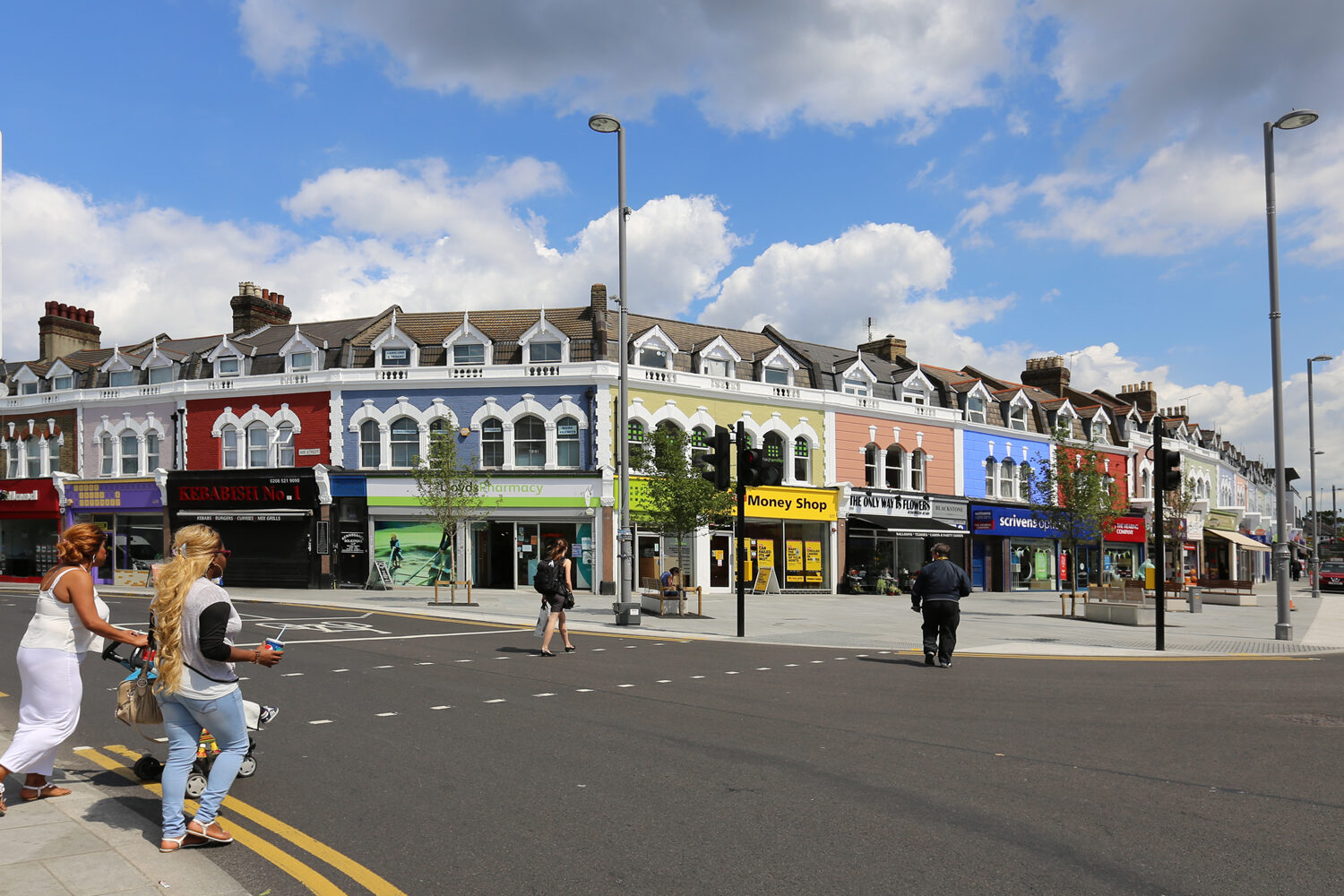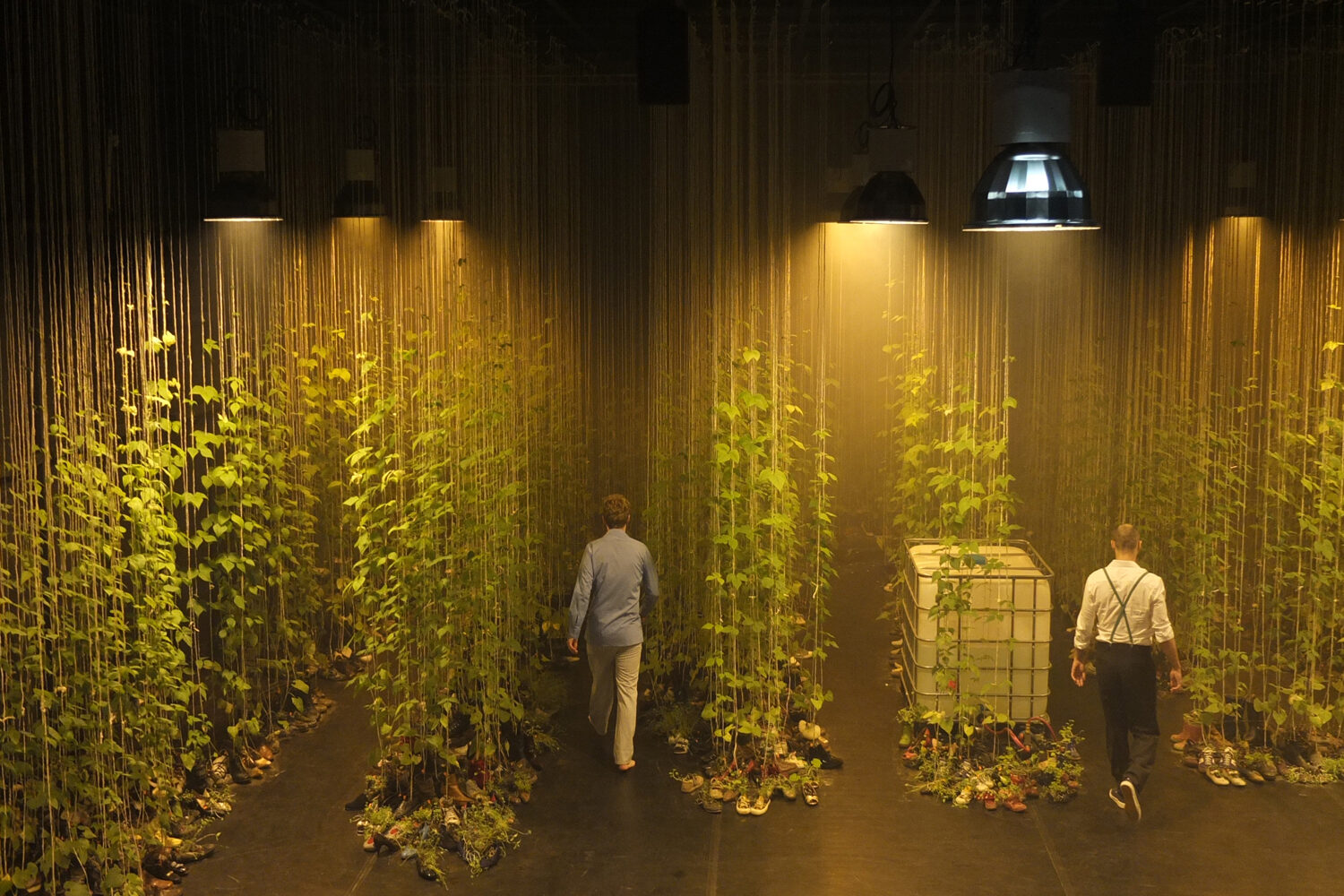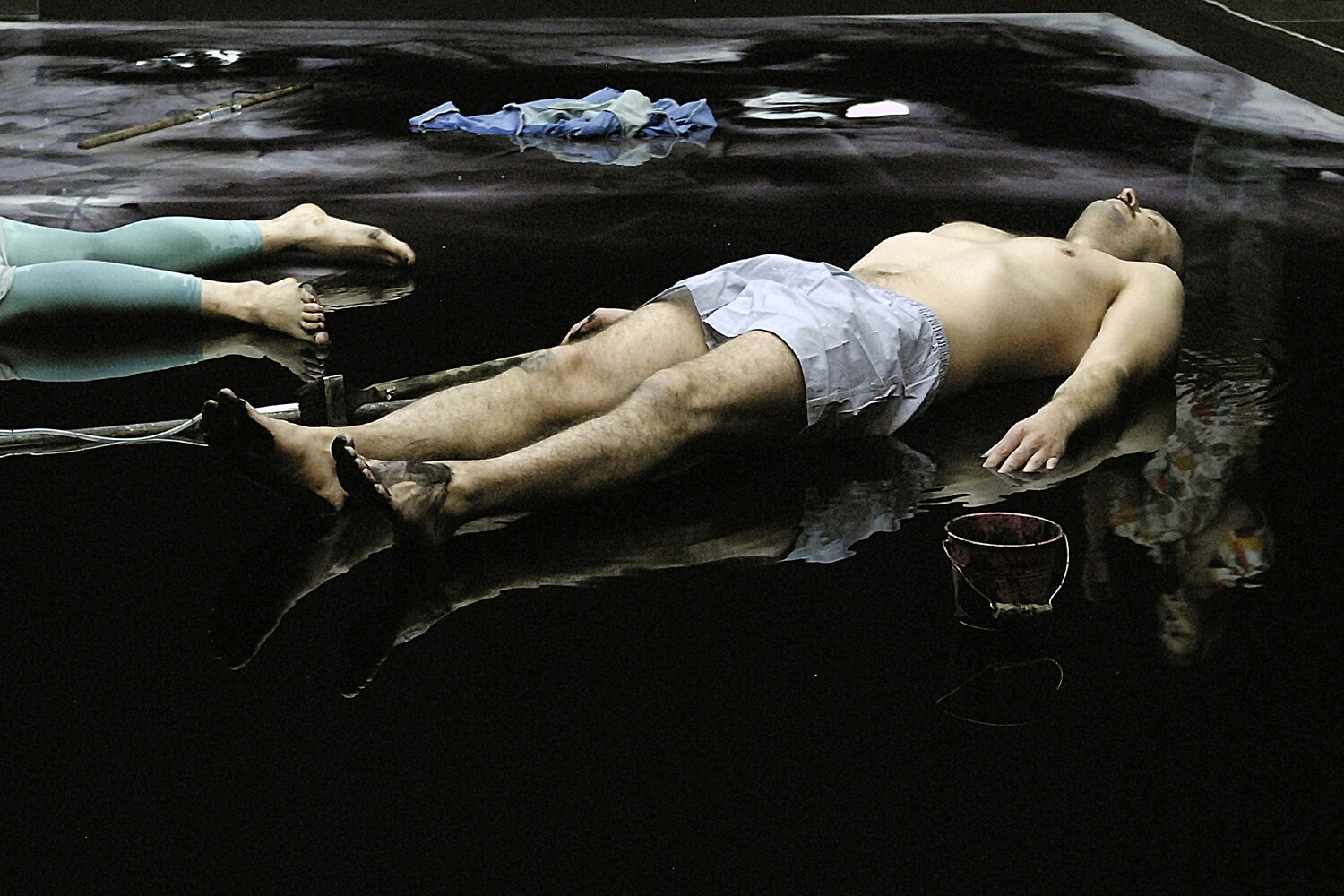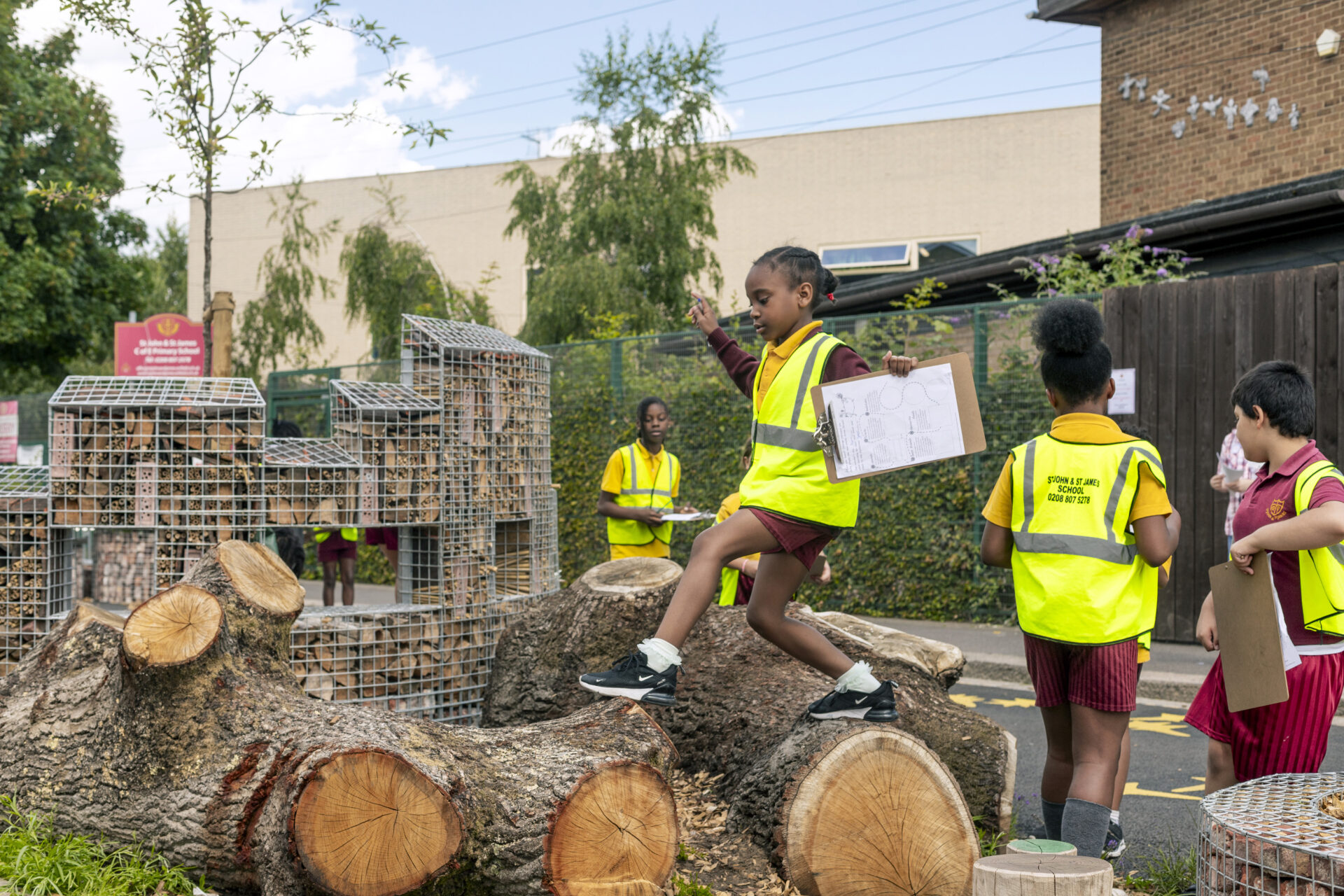
Major developments down the road in Tottenham and Meridian Water, as well as regeneration of the surrounding Joyce and Snell’s Estate, will bring new opportunities to Fore Street. For now, residents currently experience incomes among the lowest 10% in England, exacerbated by a poor living environment and high barriers to education, training and employment. Teachers at the local primary school (St. John & St. James C. of E.) reported that their students often live in cramped conditions, with few opportunities to develop their imaginations through play.
JKA worked with Enfield Council through conversation with local residents, businesses and artists to identify and address these urgent challenges in the immediate term, while building resilience for the long term. Our shared vision helped Enfield Council secure £2.2 million from the Mayor’s Good Growth fund to:
- Retro-fit the existing Library to support educational, cultural and community functions
- Convert defunct garages just behind the high street into affordable workspace for young enterprises
- Install public artworks to reinforce physical and cultural connections between the high street and the communities it serves (with local architects Fisher Cheng).
The Wild Street completes a new connection between the Primary School, through Angel Yard to an existing community hall. At the same time, the improved public environment links Angel Yard to the high street and its refurbished library. While continuing to allow emergency vehicle access into the Joyce and Snells Estate, every available scrap of tarmac has been removed to make way for rain gardens, trees and above-ground planters for the school to cultivate.
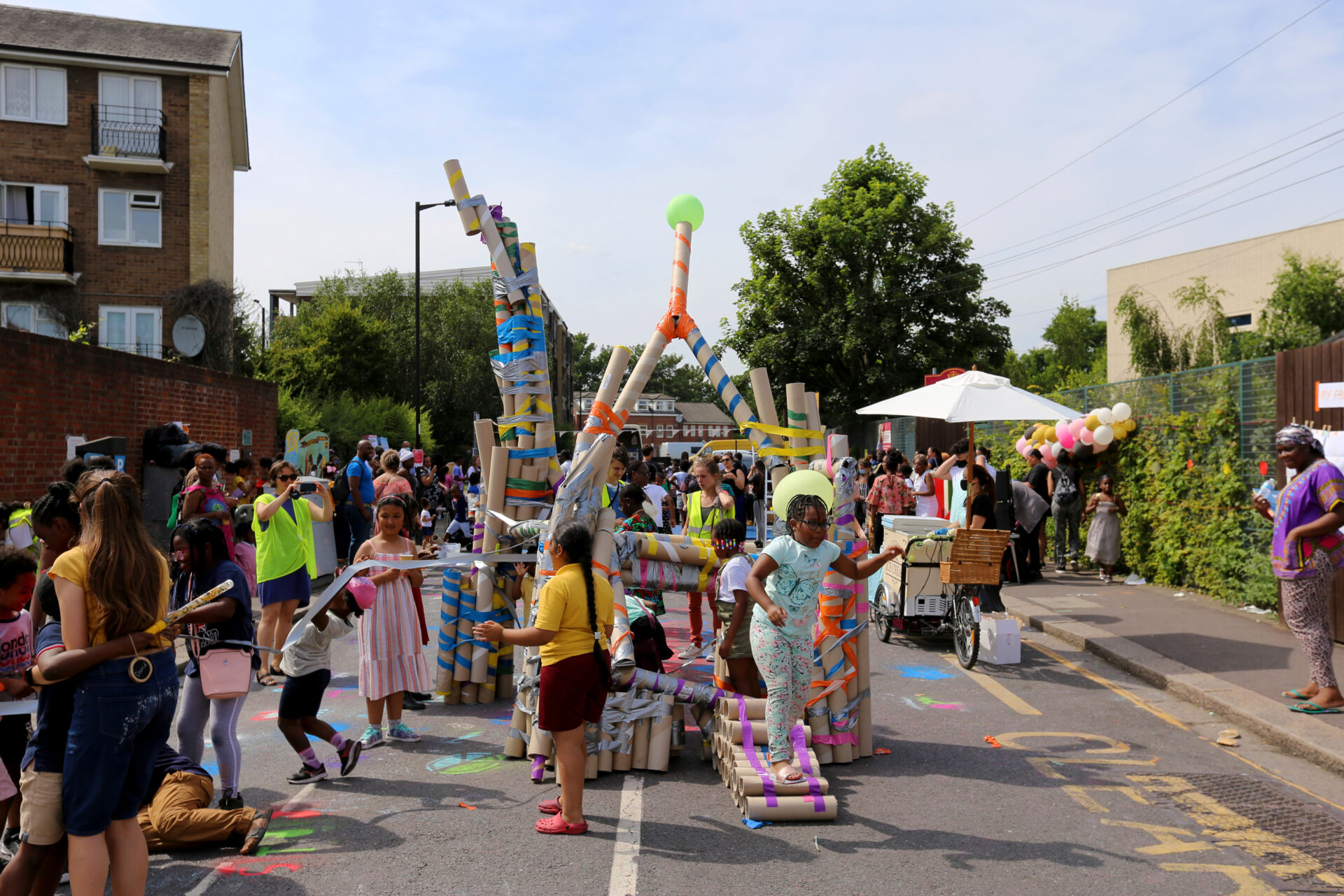
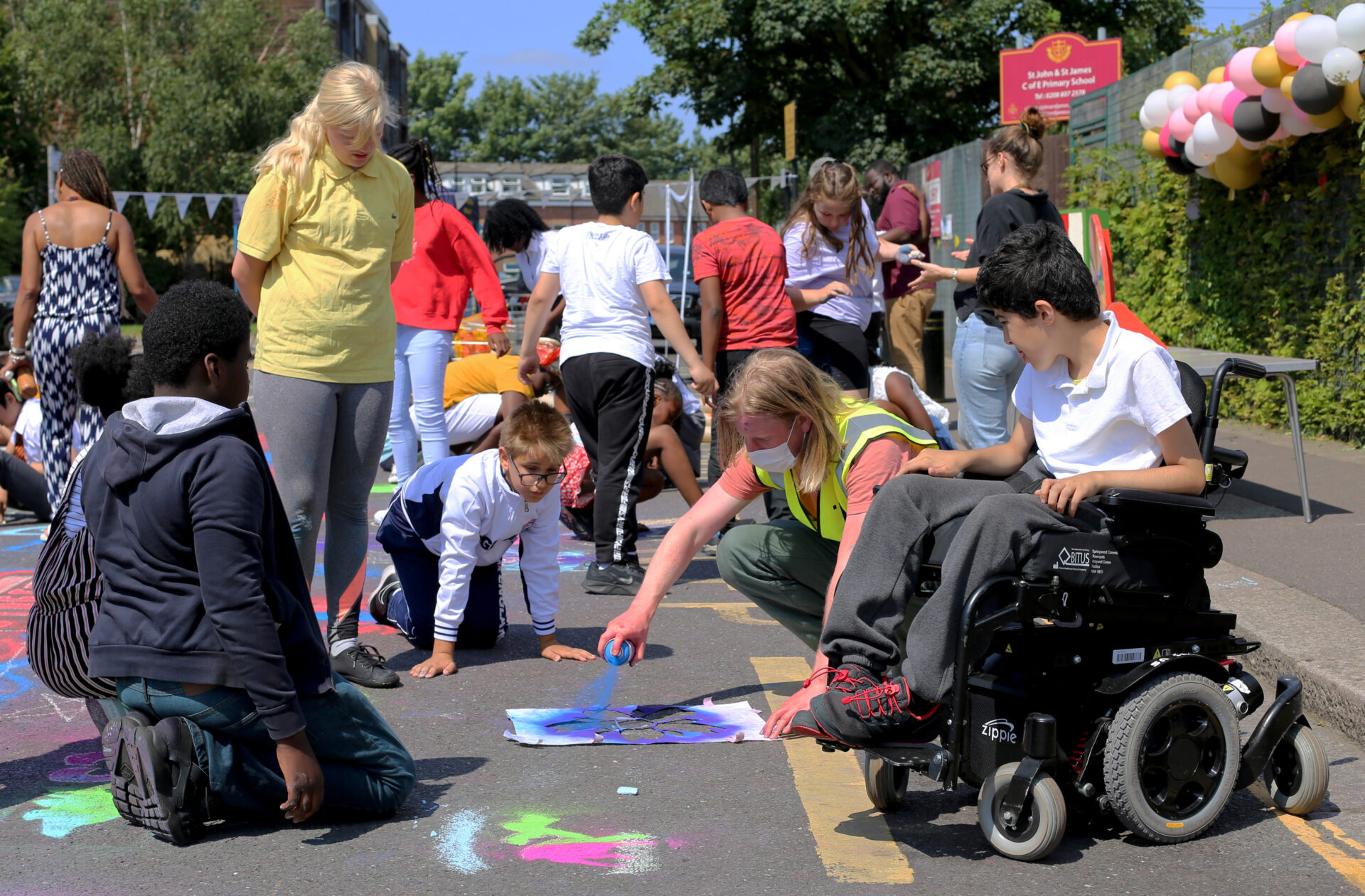
We launched our collaboration with the school with an all-school ‘Play Street’ event and collaborative build. This established a clear spatial brief for a school street that balances moments of private imaginative play and engagement with nature with the capacity for social congregation and events. The design continued to evolve in response to the students’ fantastic vision of a range of strange hybrid animals which could inhabit their street once the cars were cleared away, elaborated through drawing, model-making and creative writing exercises.
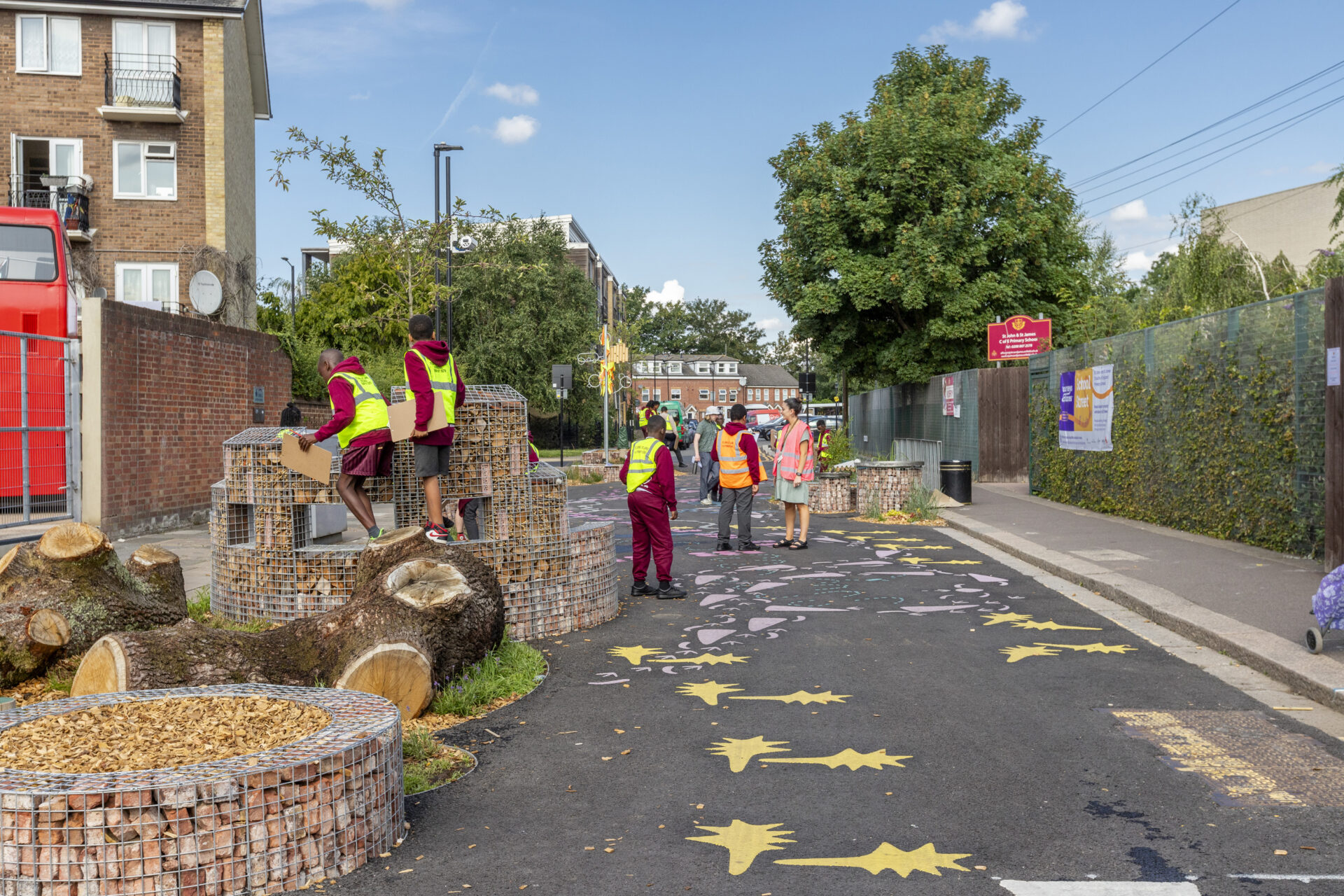
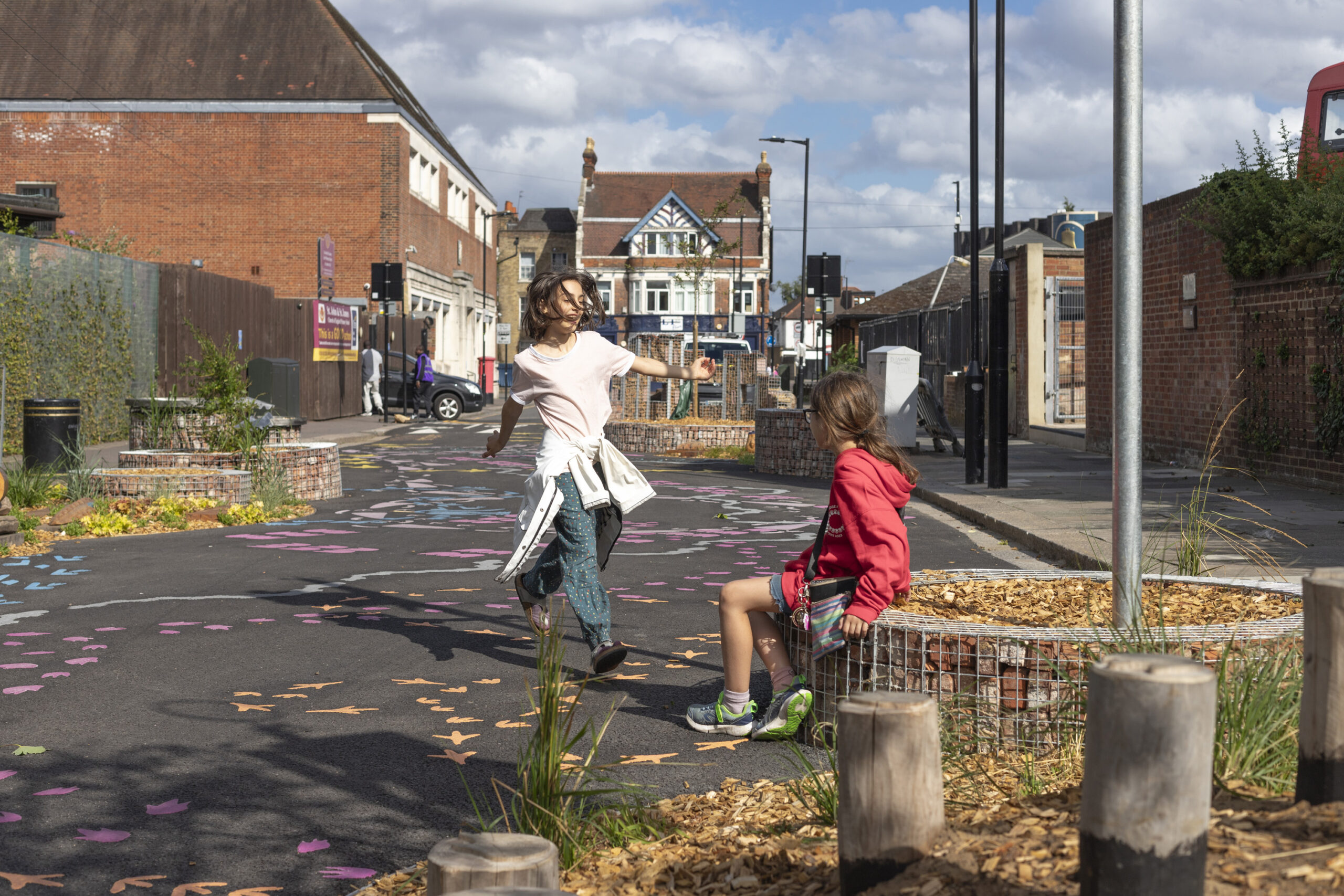
Each of the three planted ‘islands’ is designed as the habitat for two or more of the students’ imaginary creatures. Among the biodiverse planting are multiple clues to their presence: footprints, fins, favourite foods, sounds and textures. The ‘Island of the Winds’ is home to their avian friends. Long, seed-bearing grasses rustle below birdhouses and wind harps. ‘Pymmes Marsh’ recalls a local culverted river, with water collection dishes, a bee pond, reeds and a buried water harp. Finally, the ‘Hollow Tree Meadow’ incorporates felled trees from Epping and a veritable bug. The animals’ footprints suggest meandering routes for students to explore the Wild Street and continue the stories they started by looking, listening and feeling through the growing vegetation.
